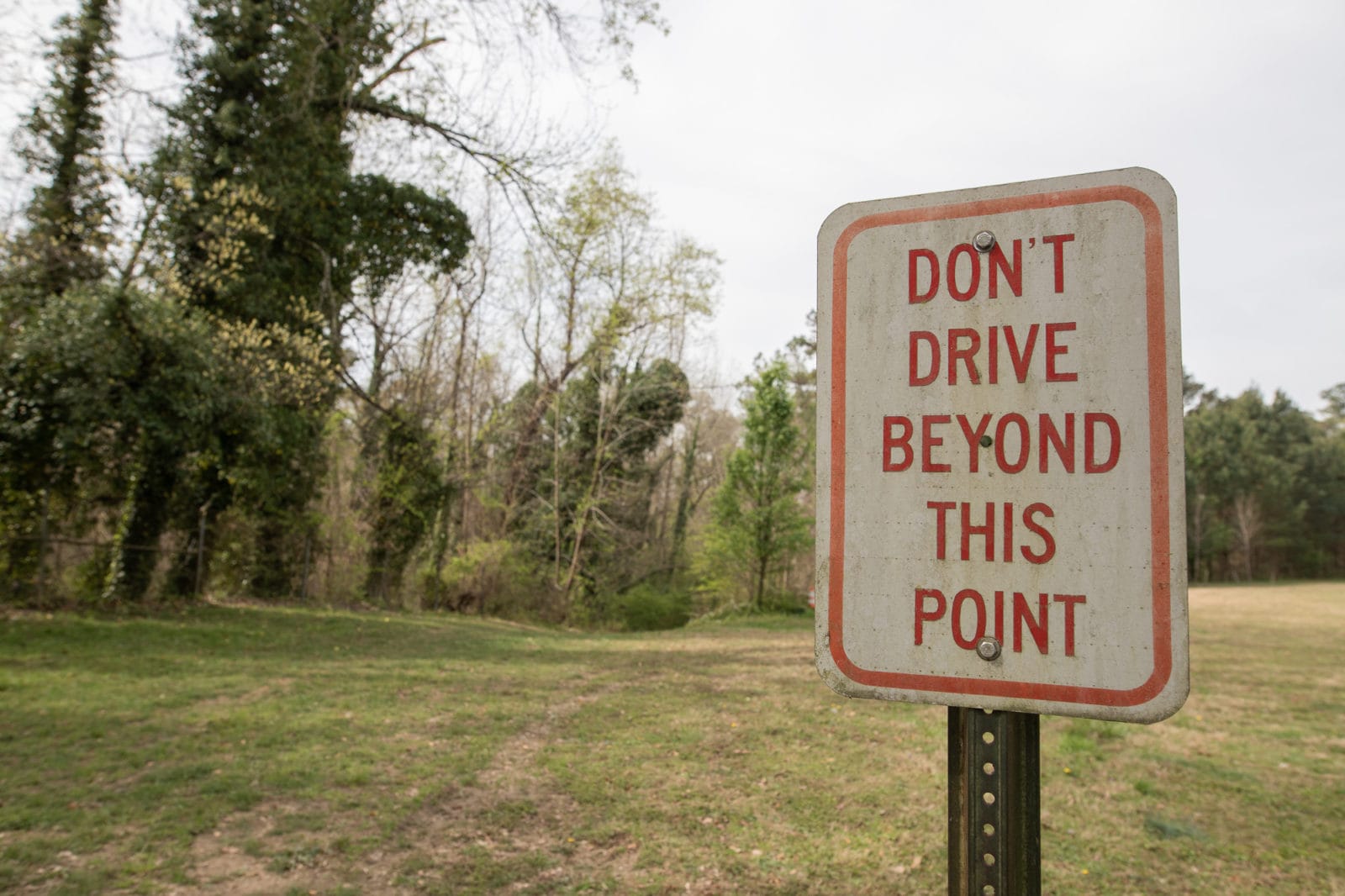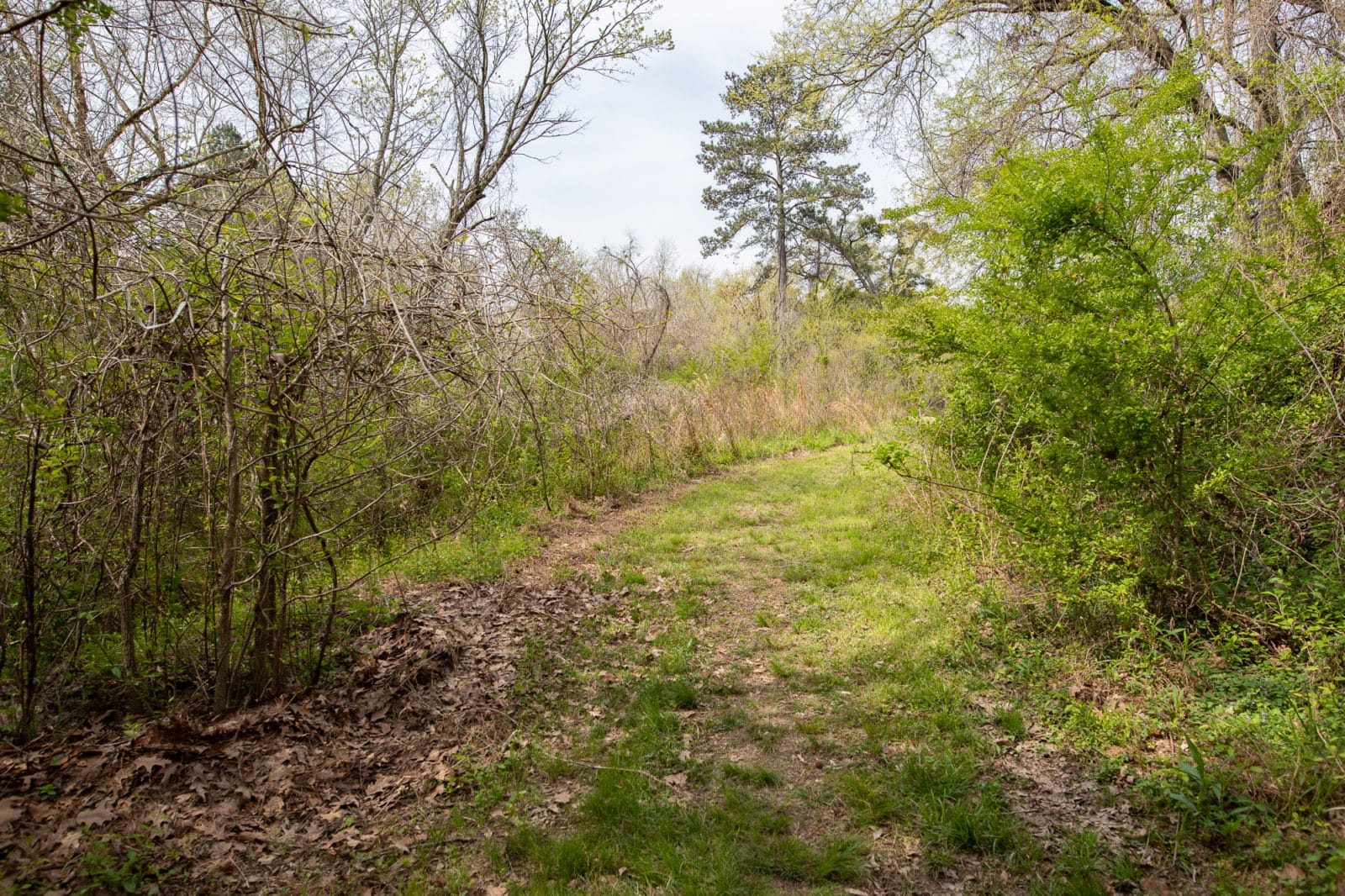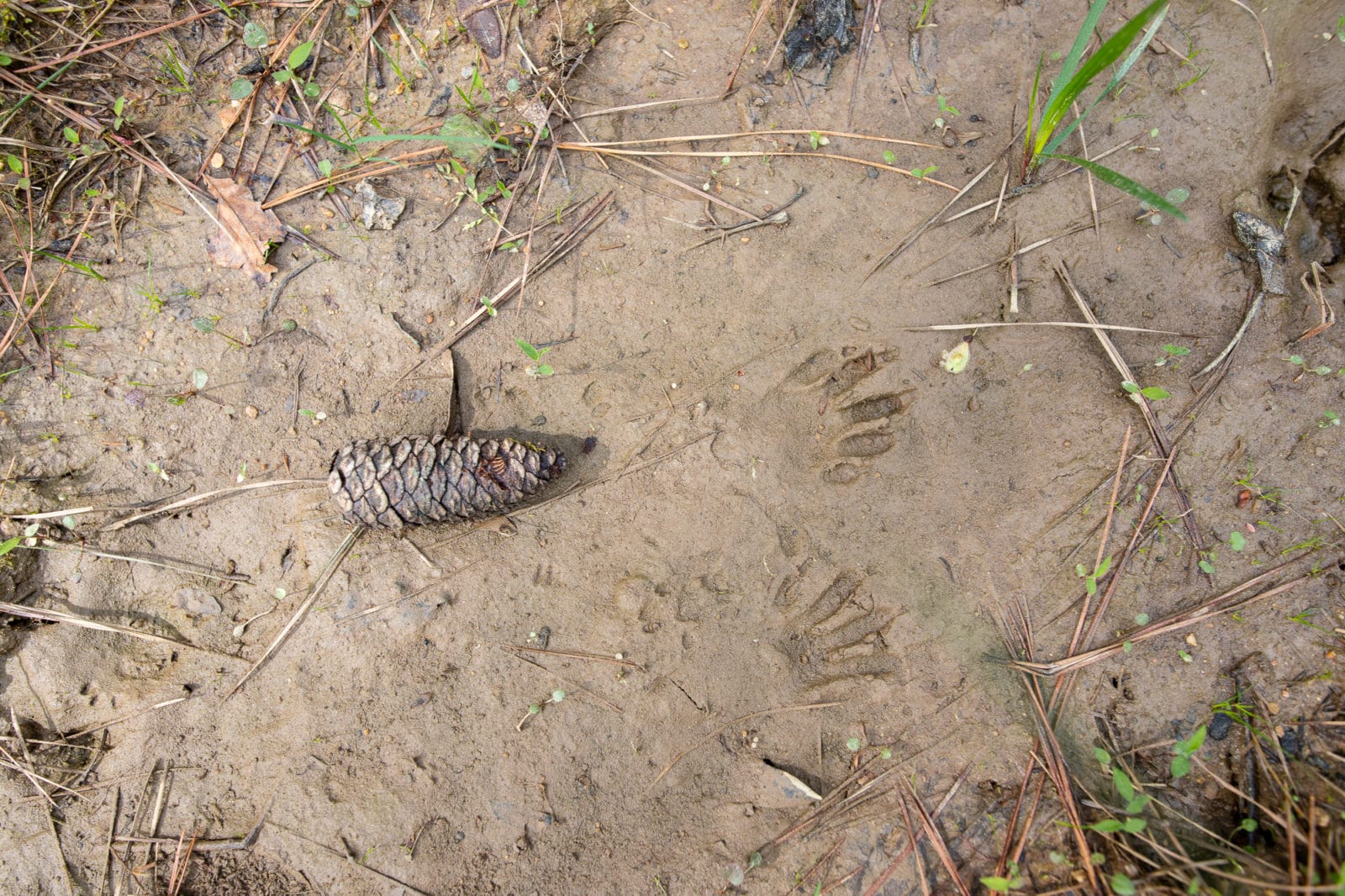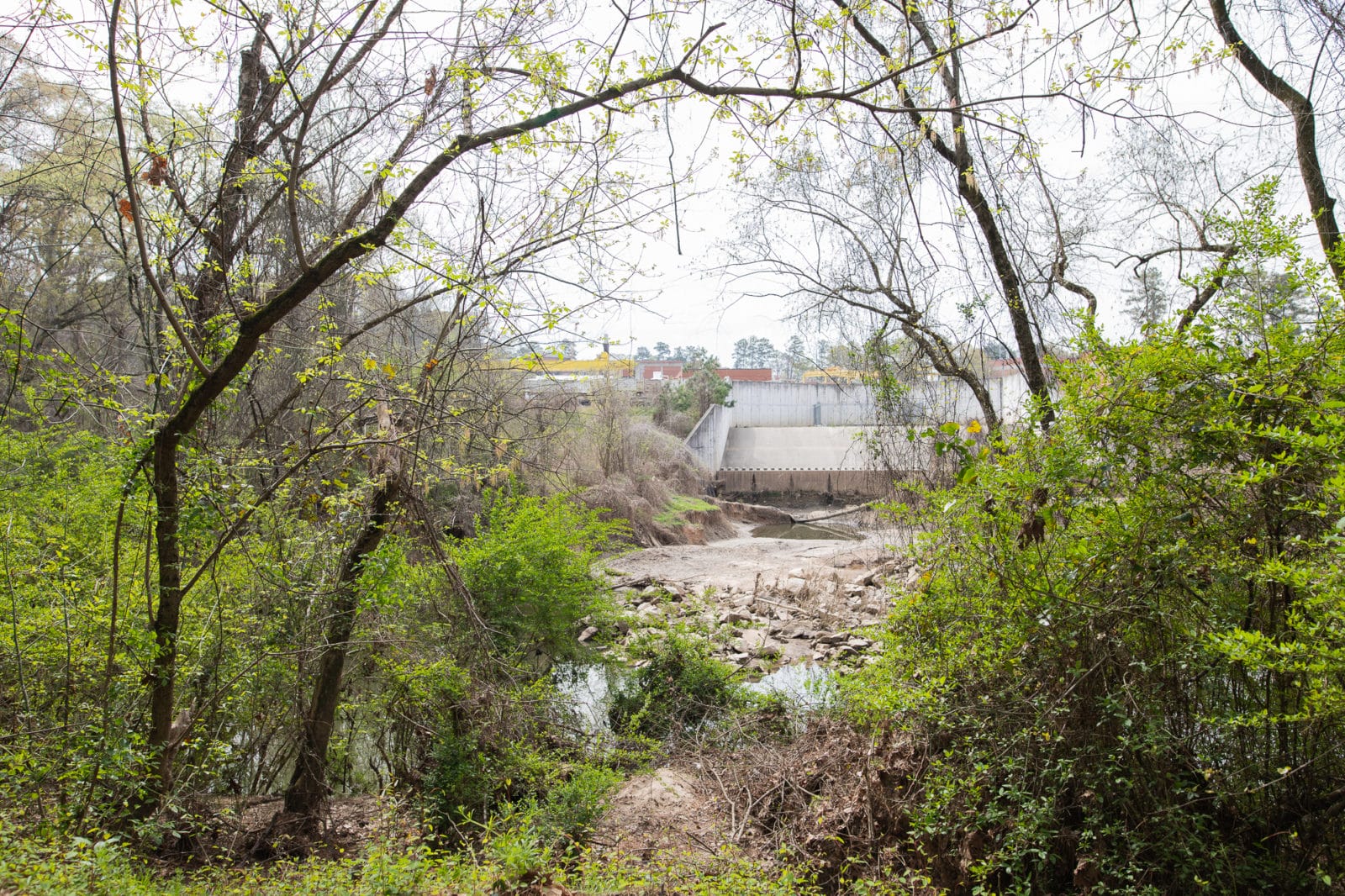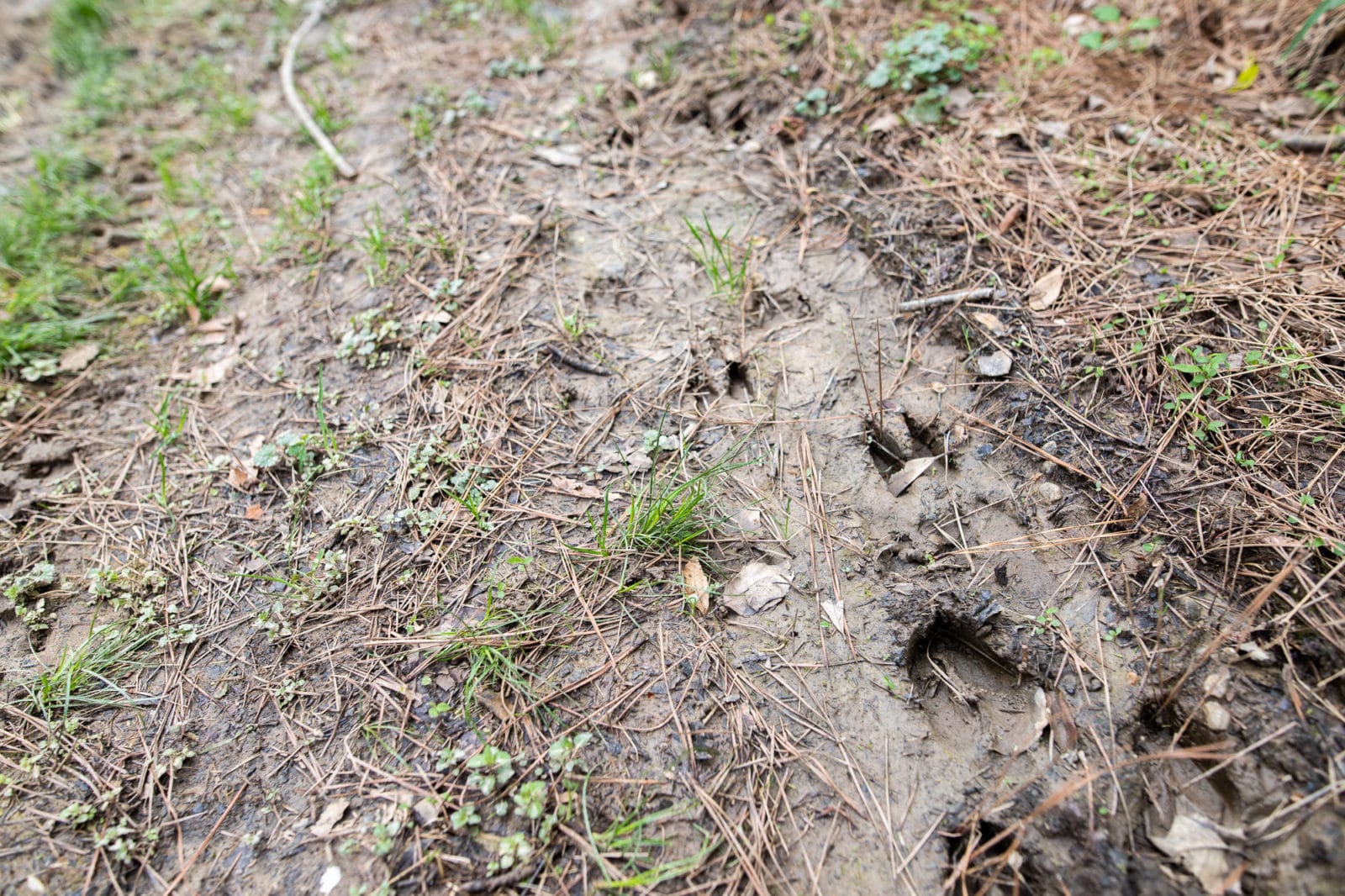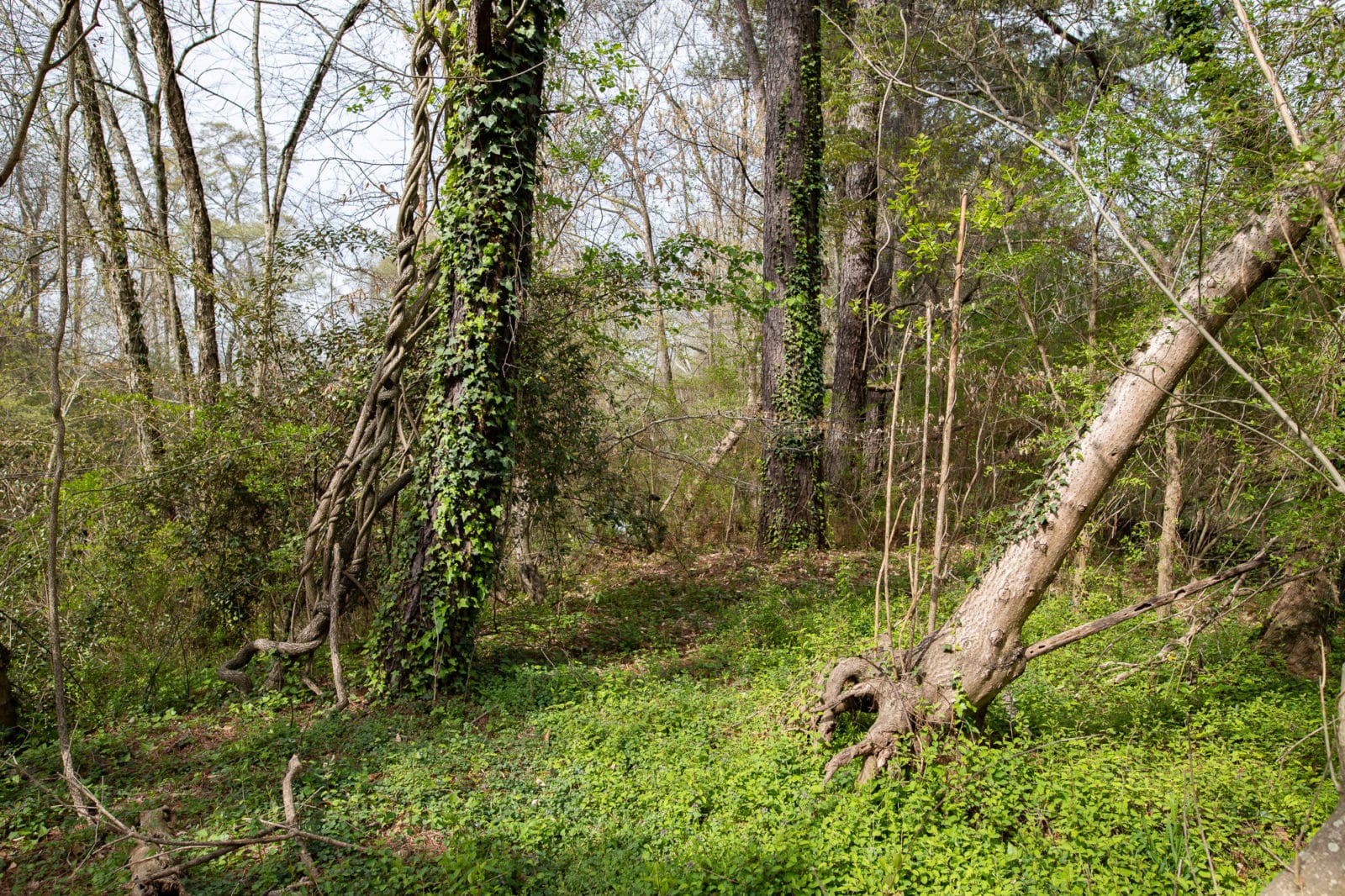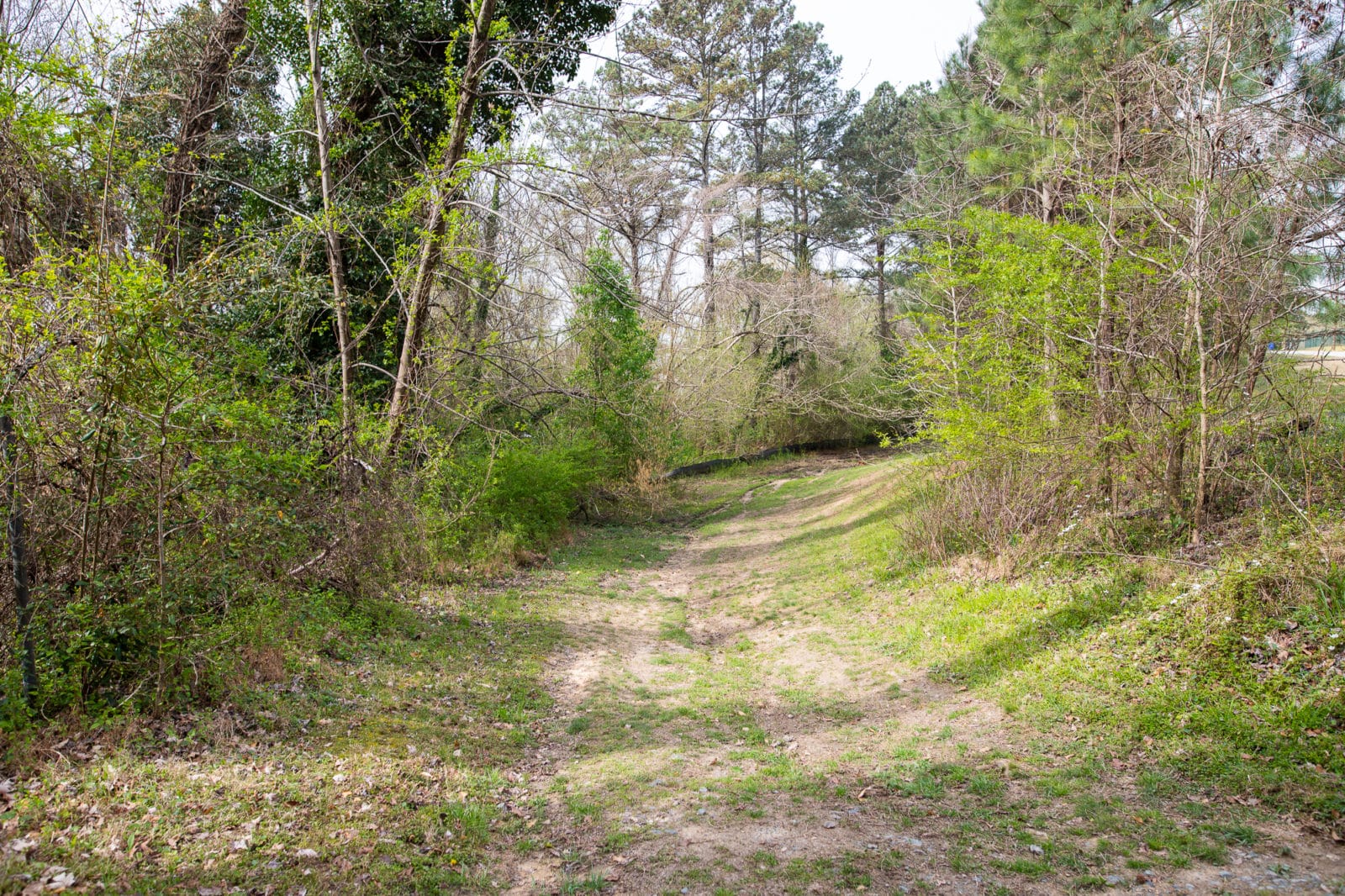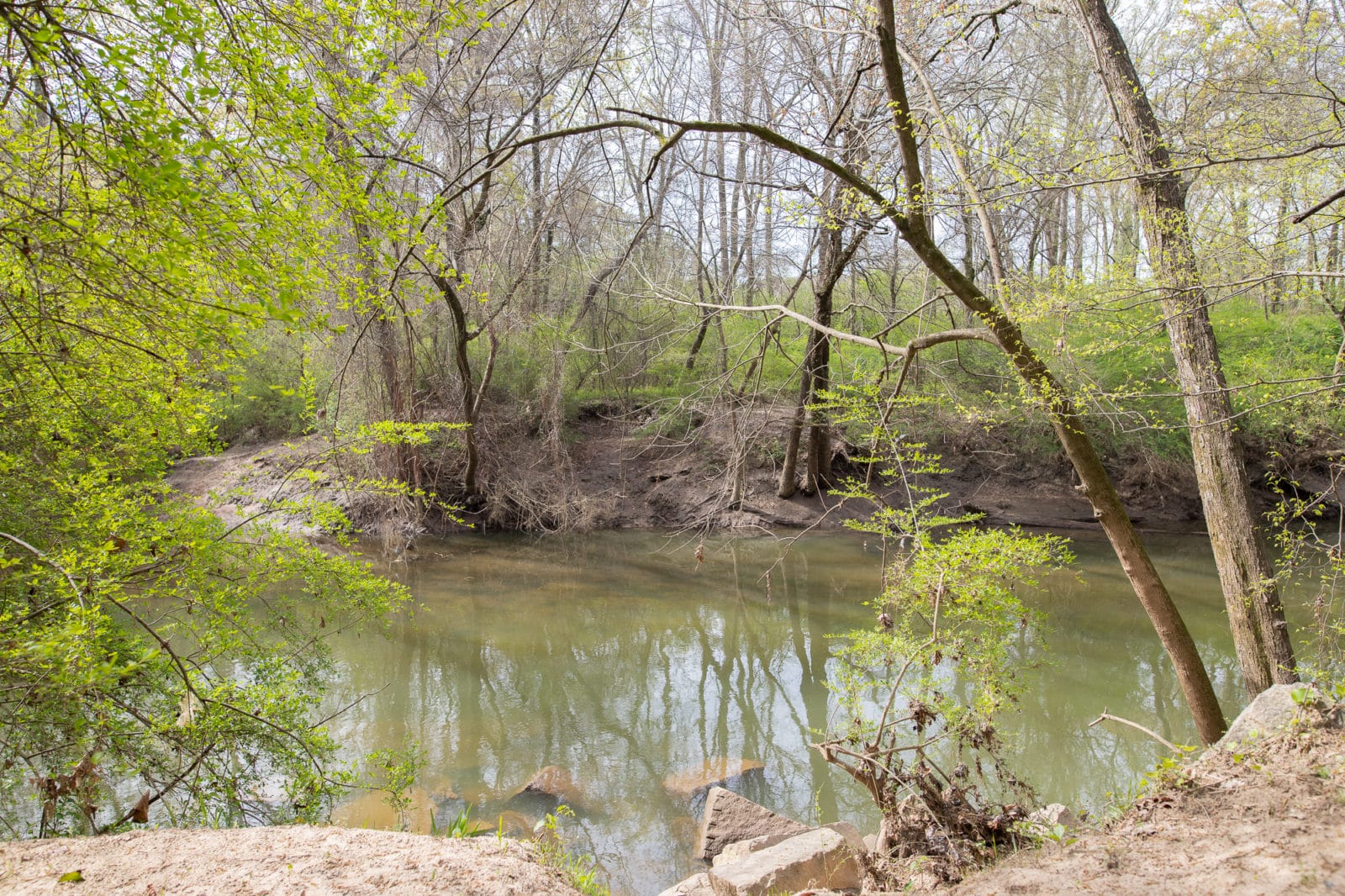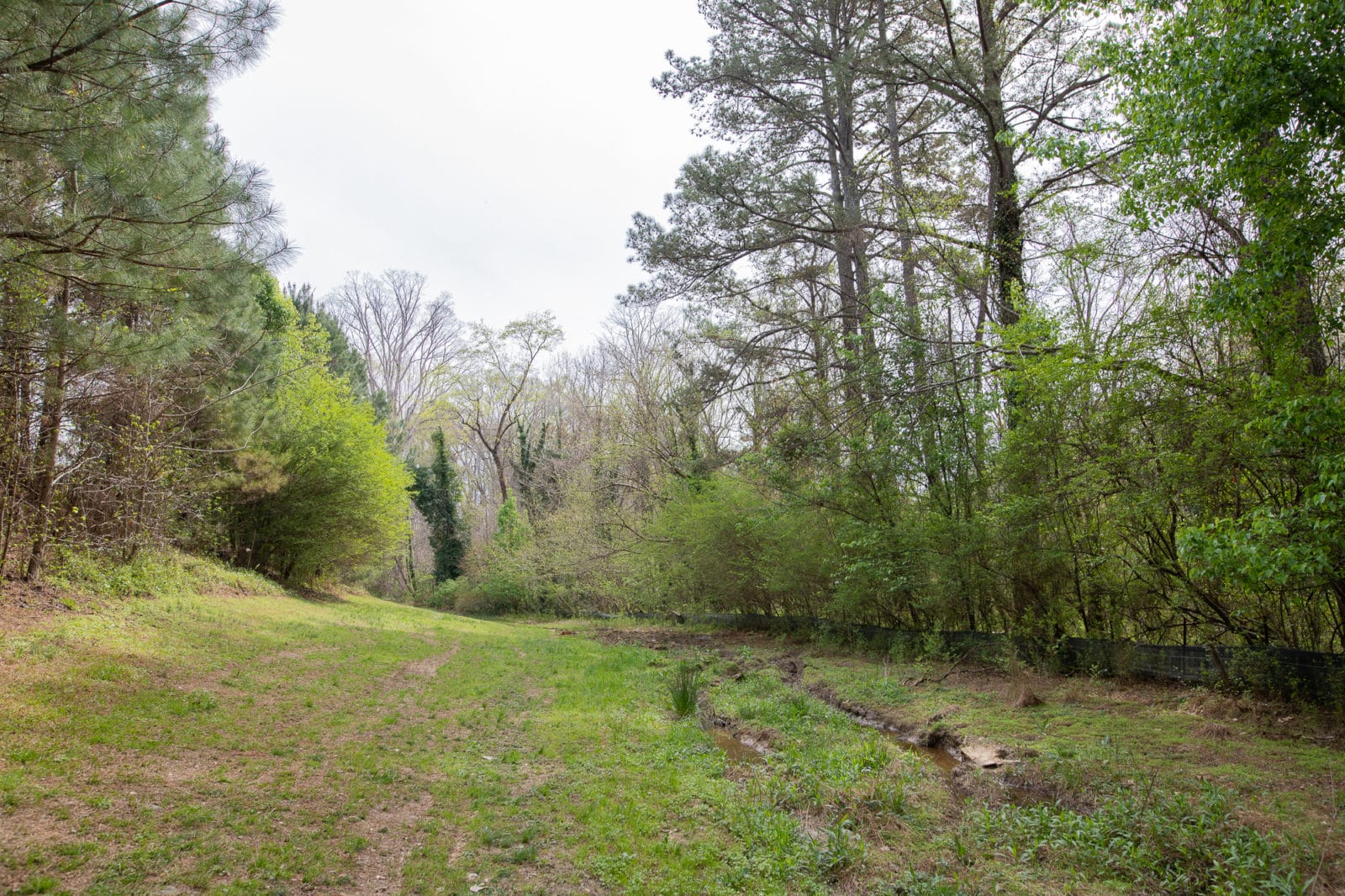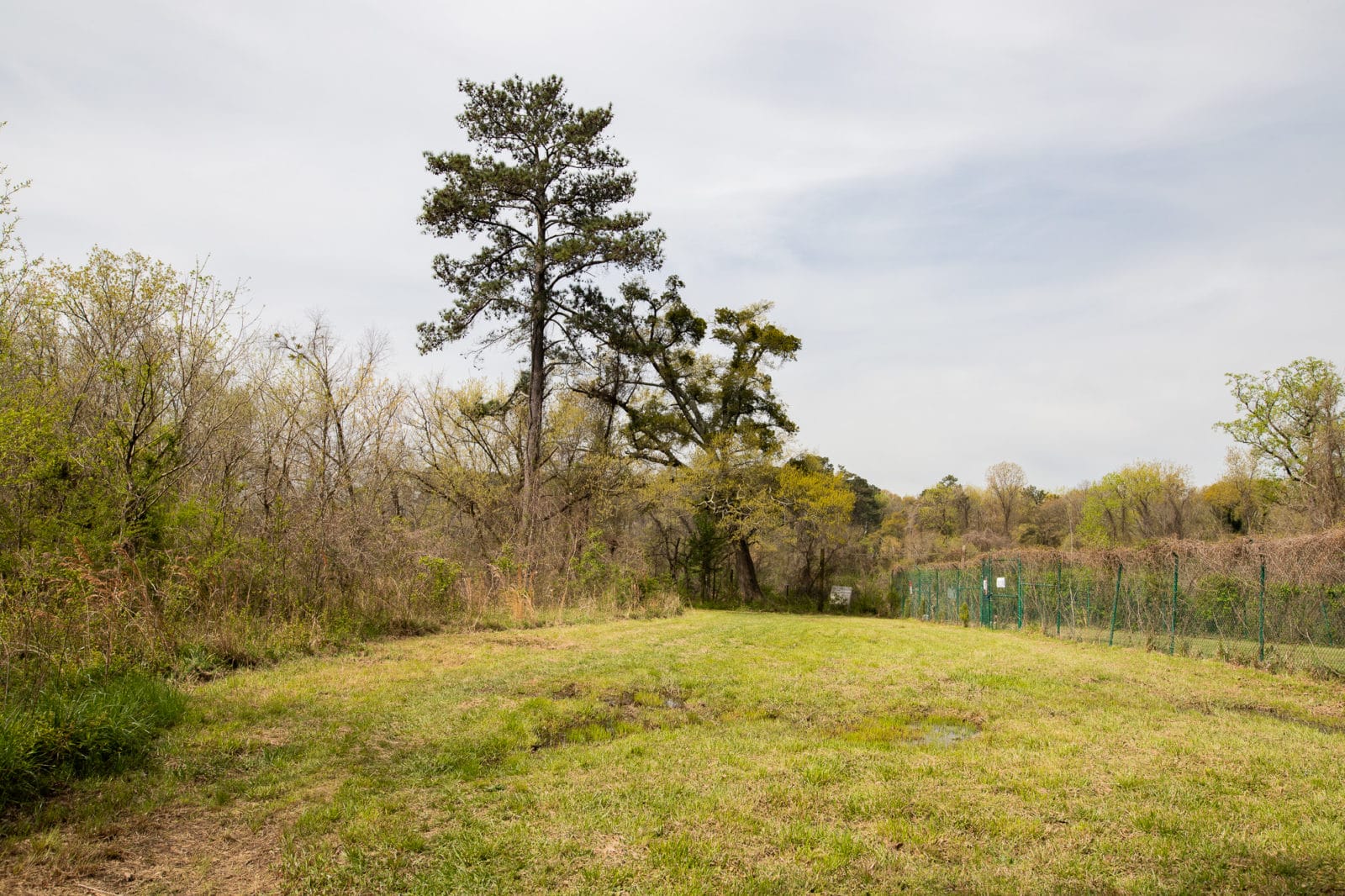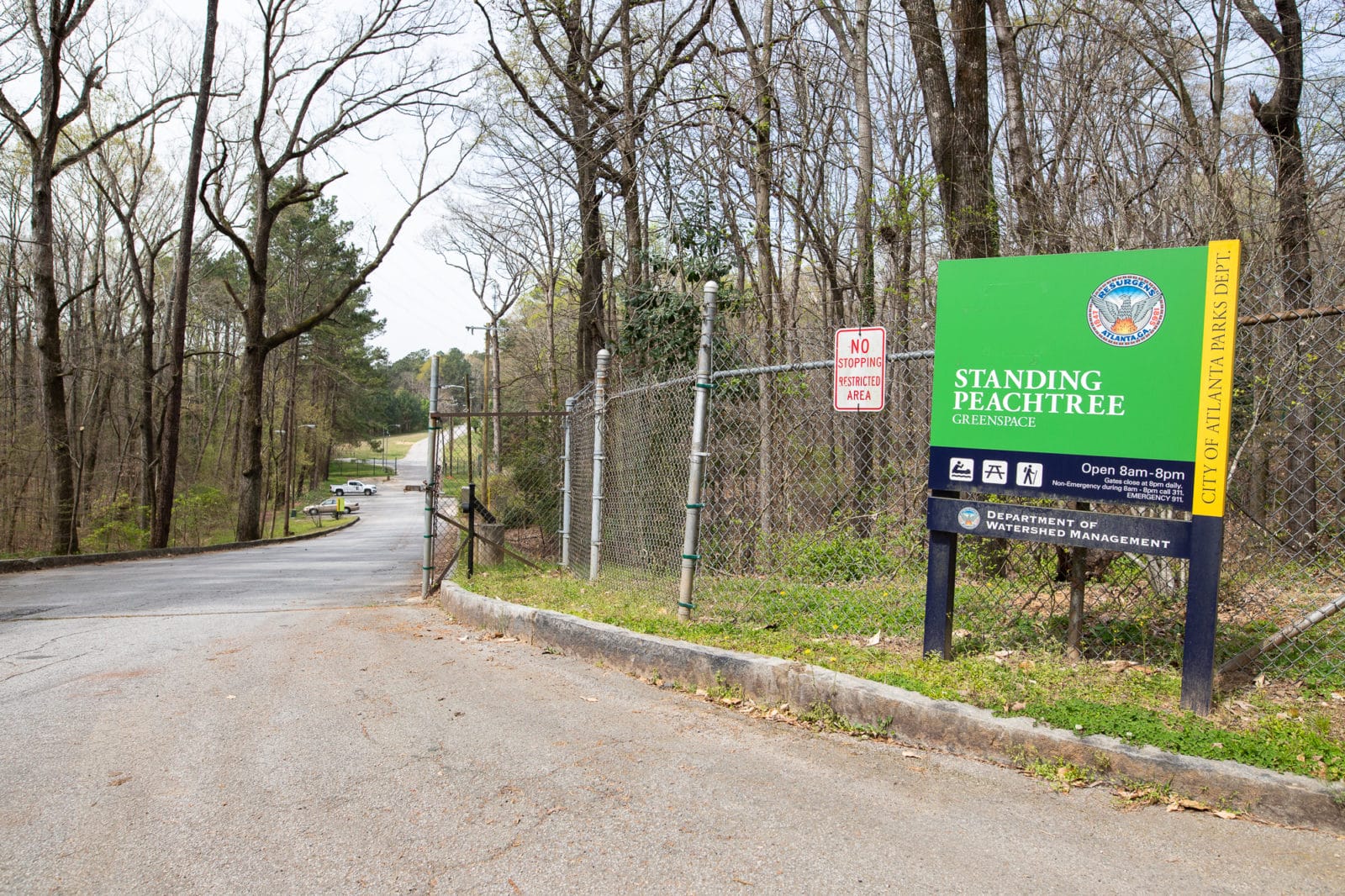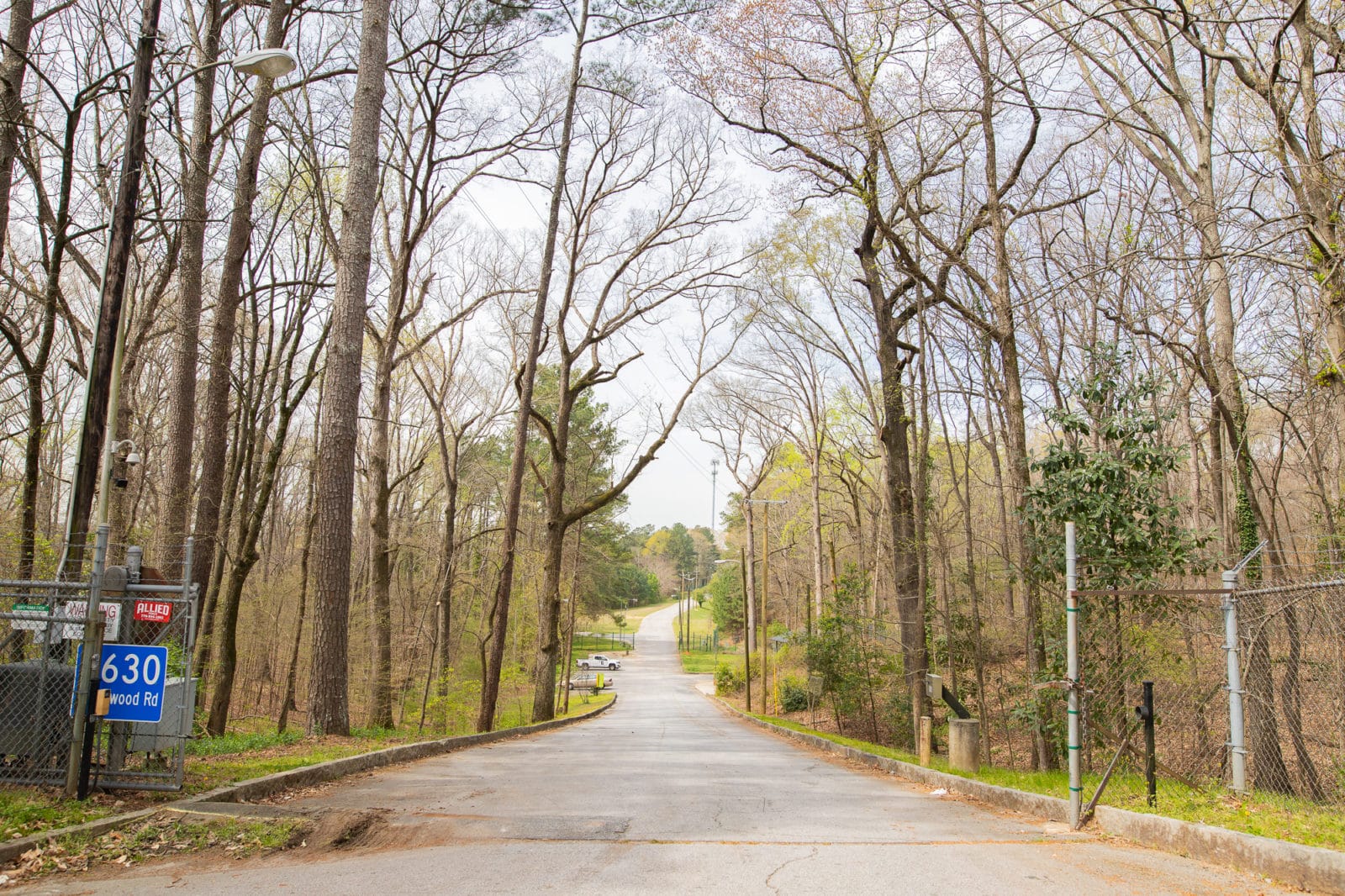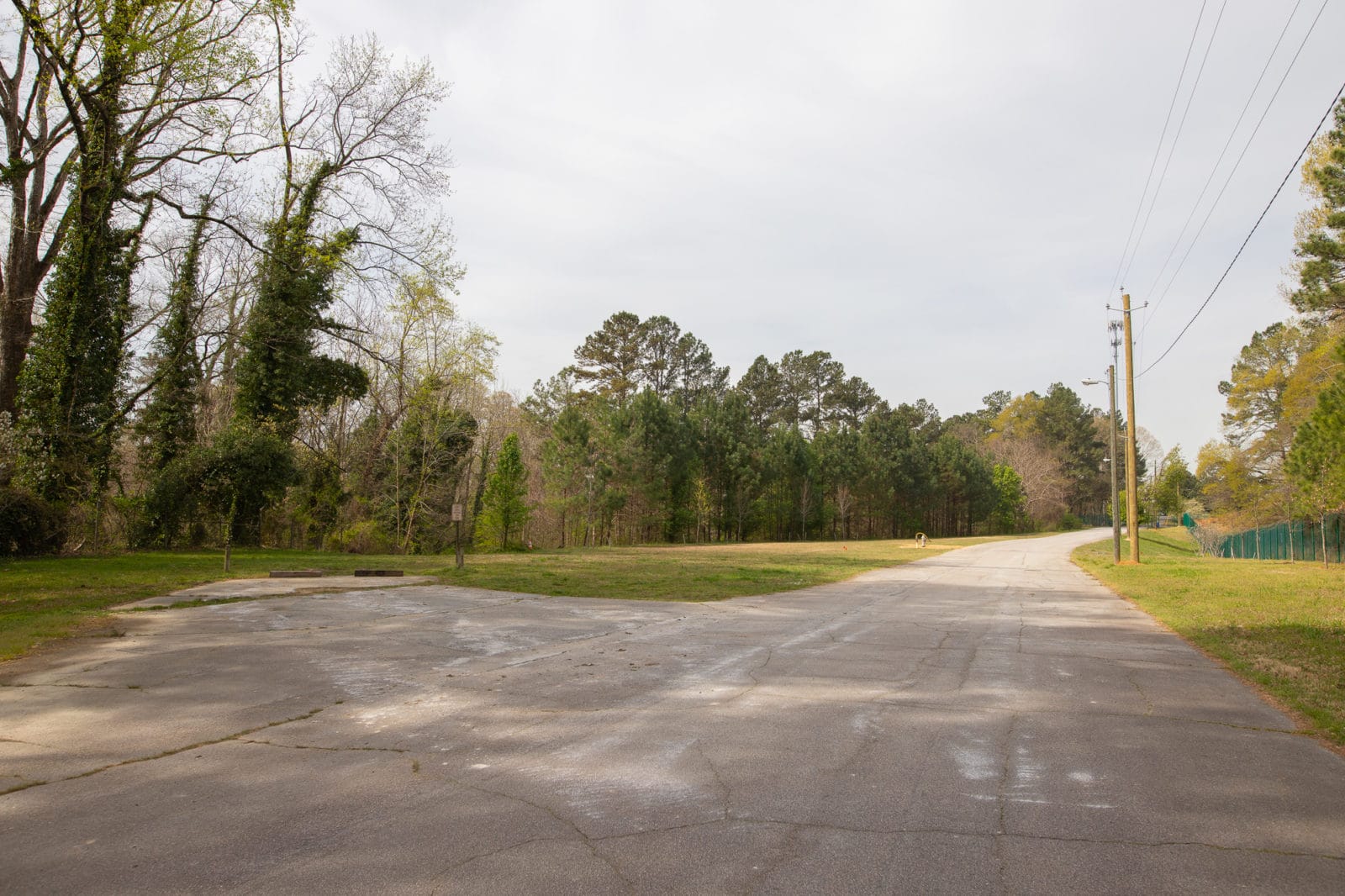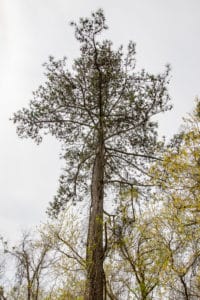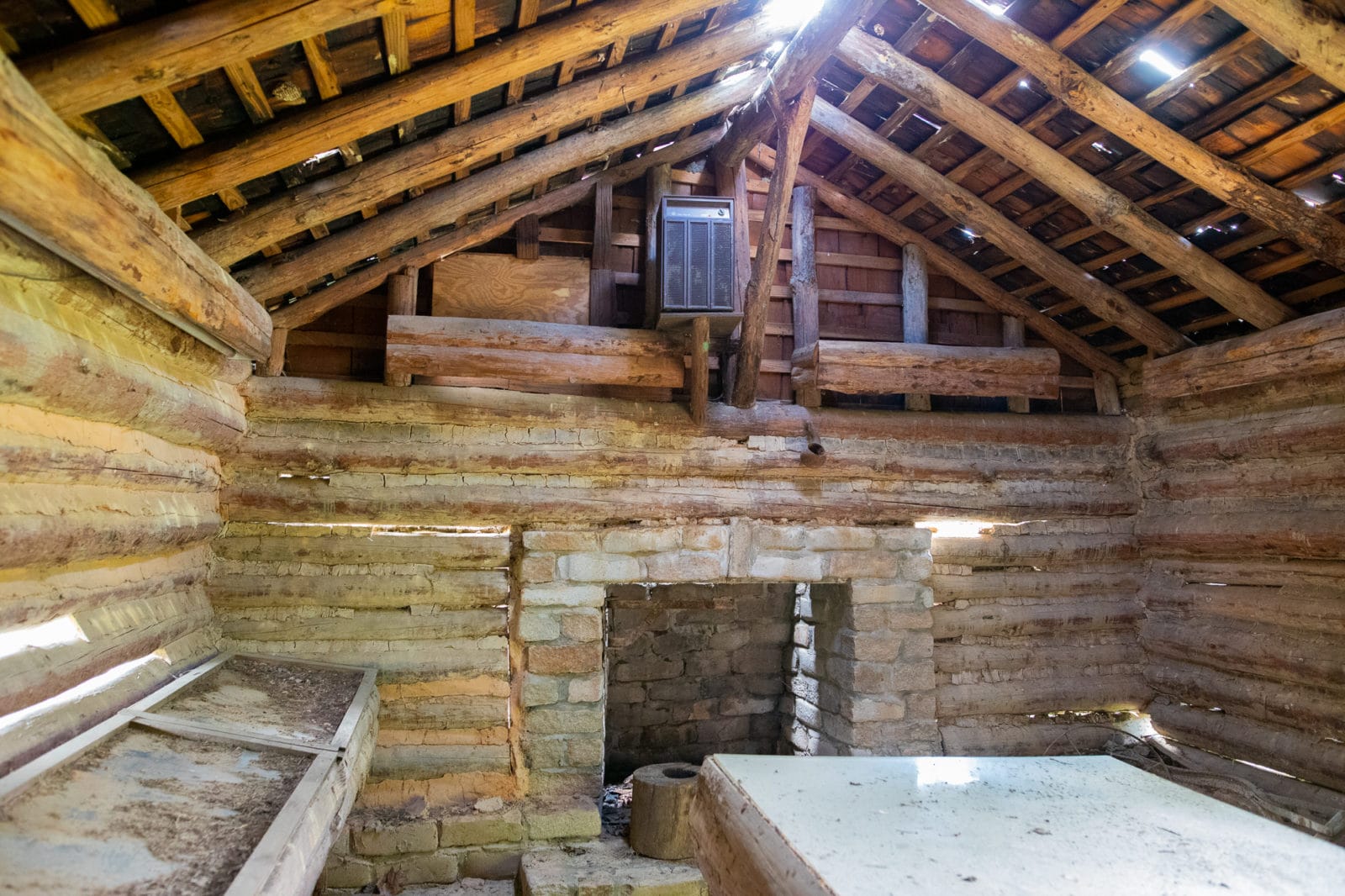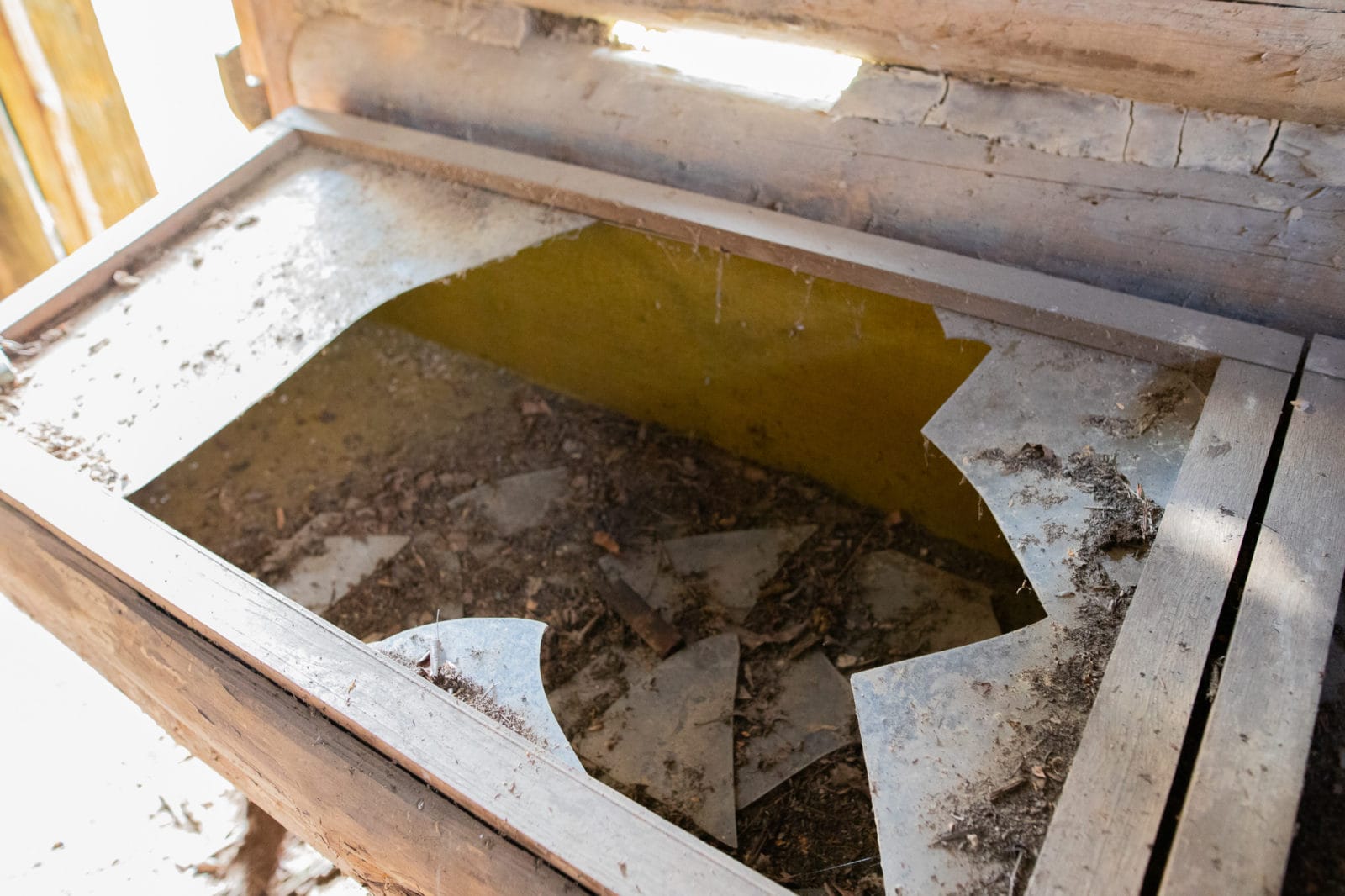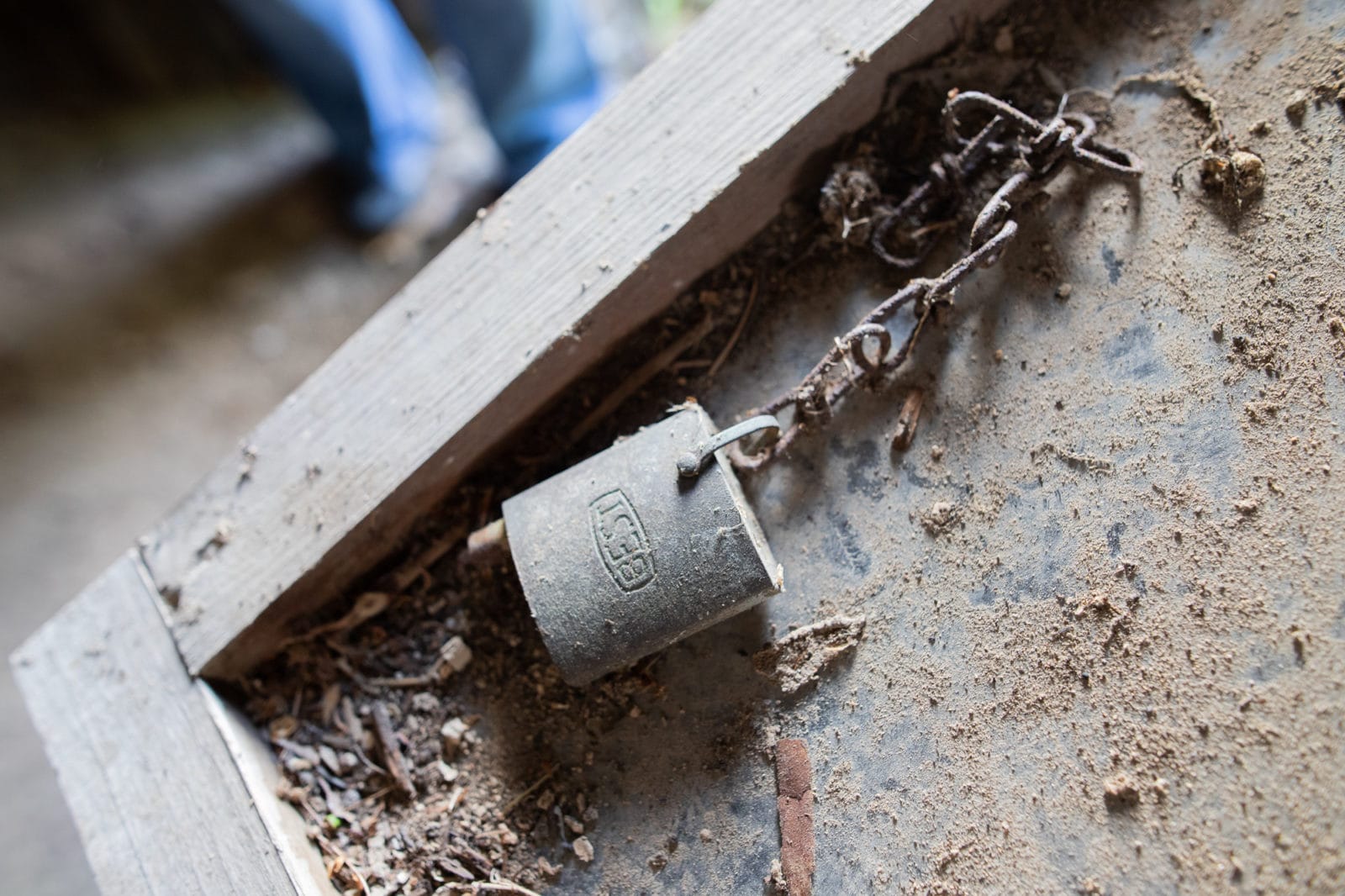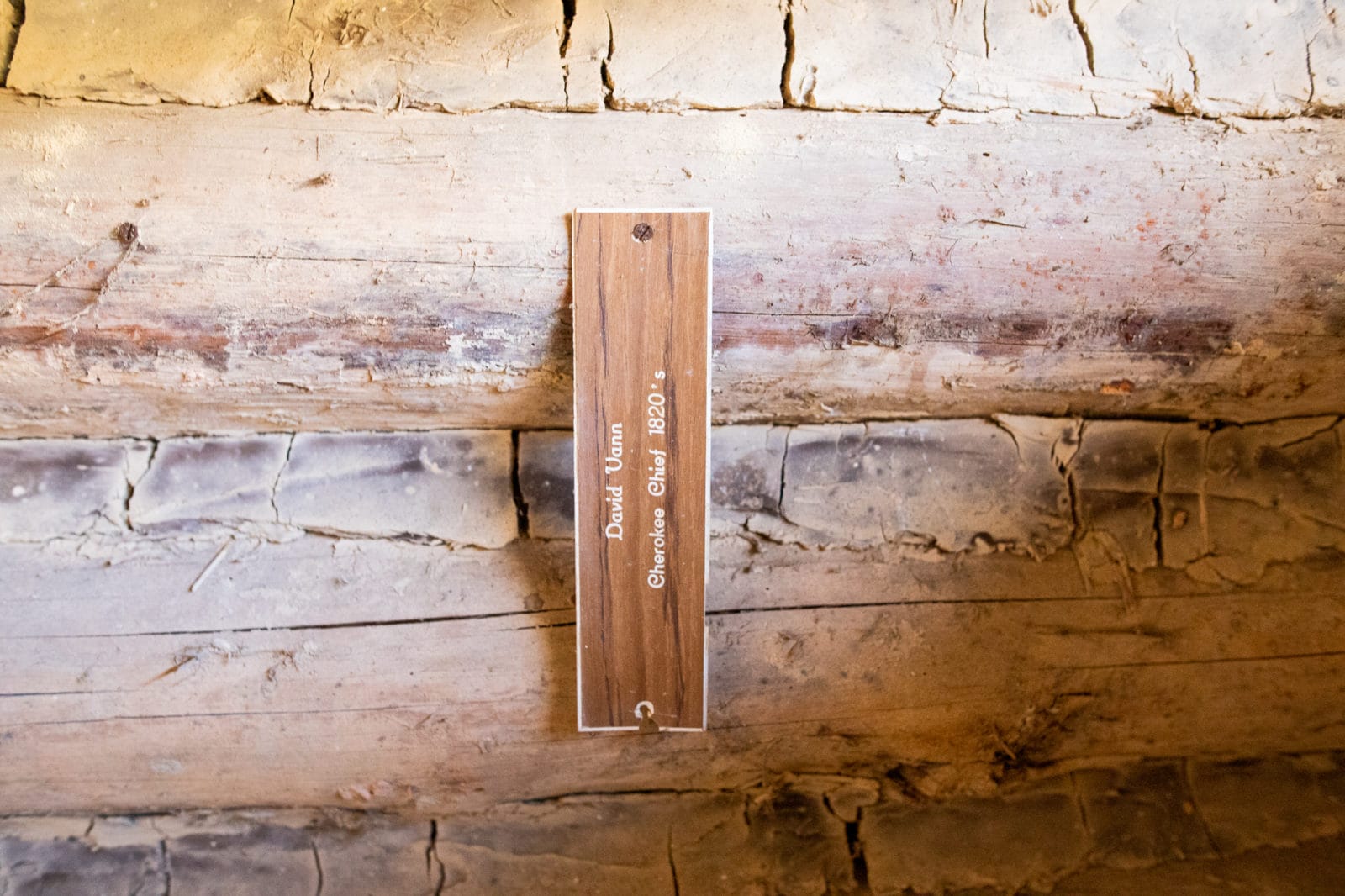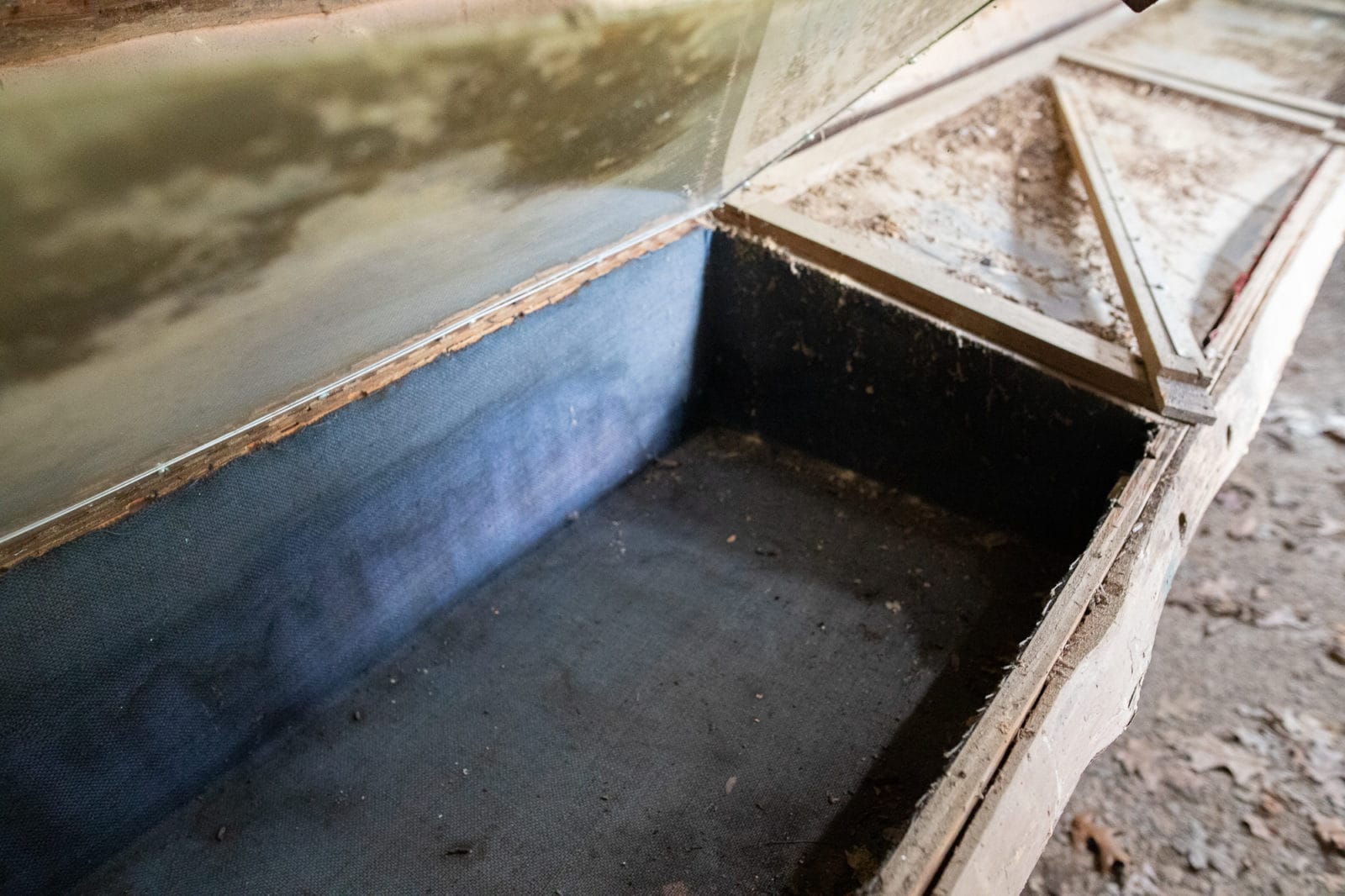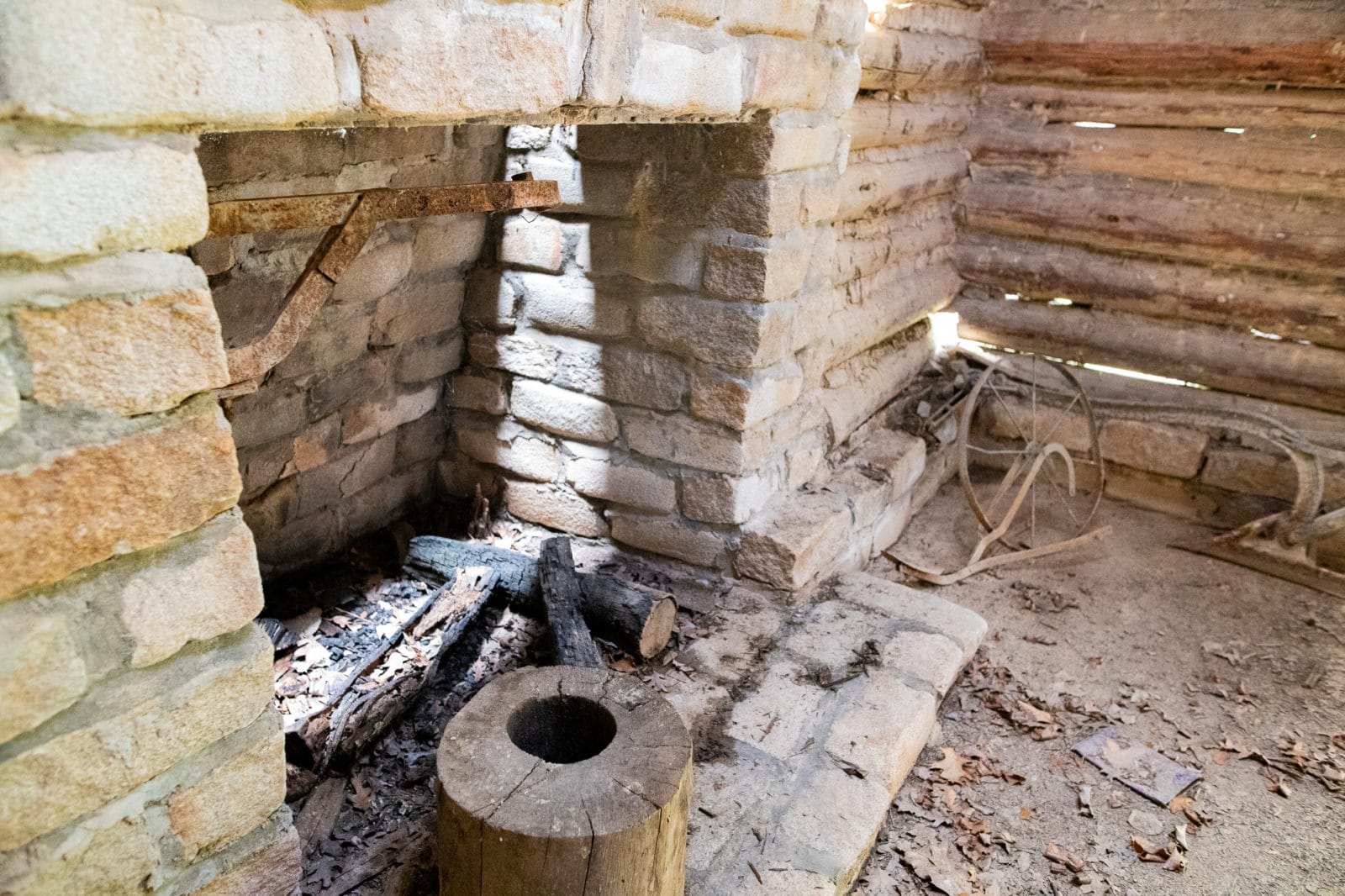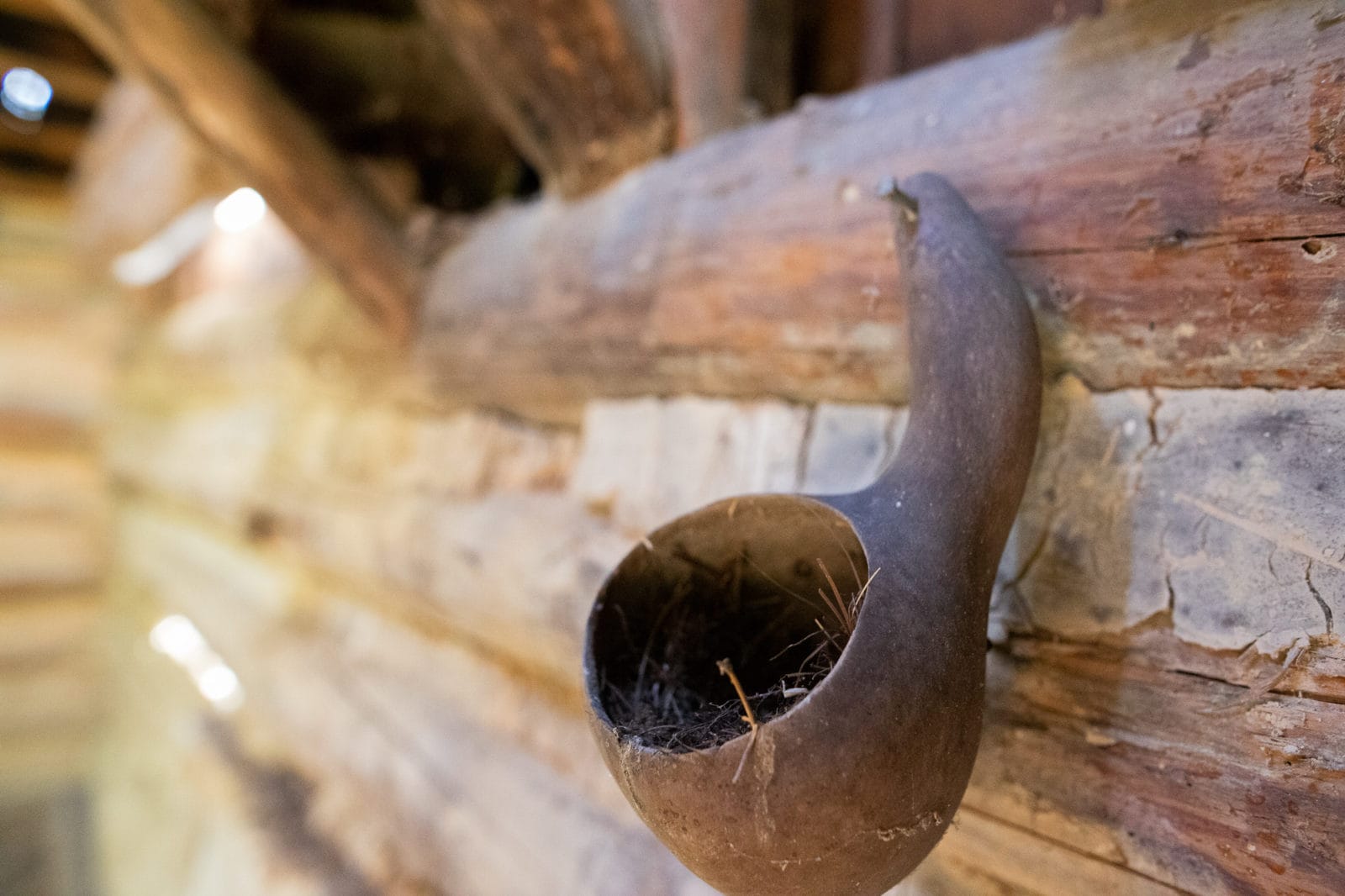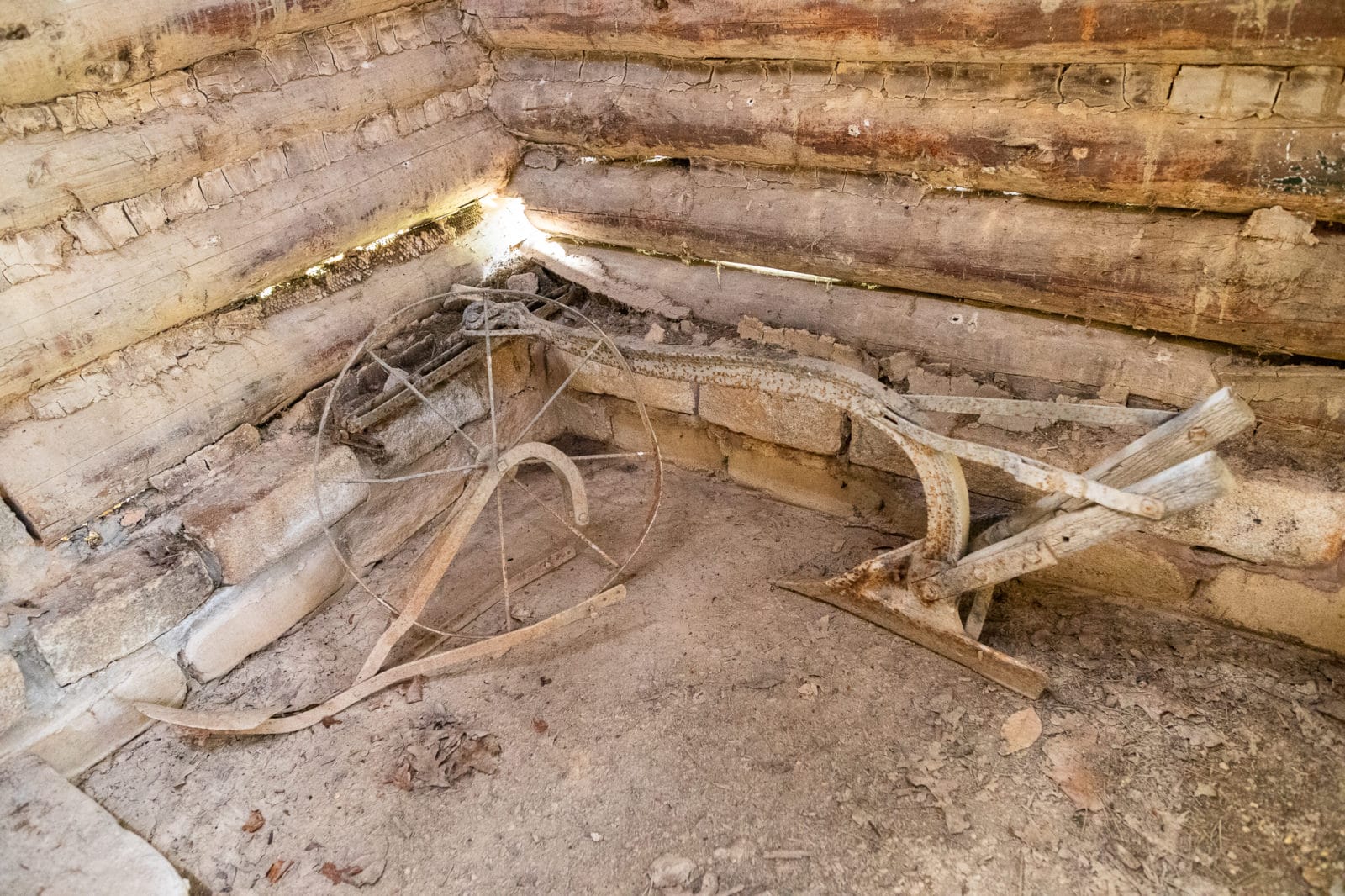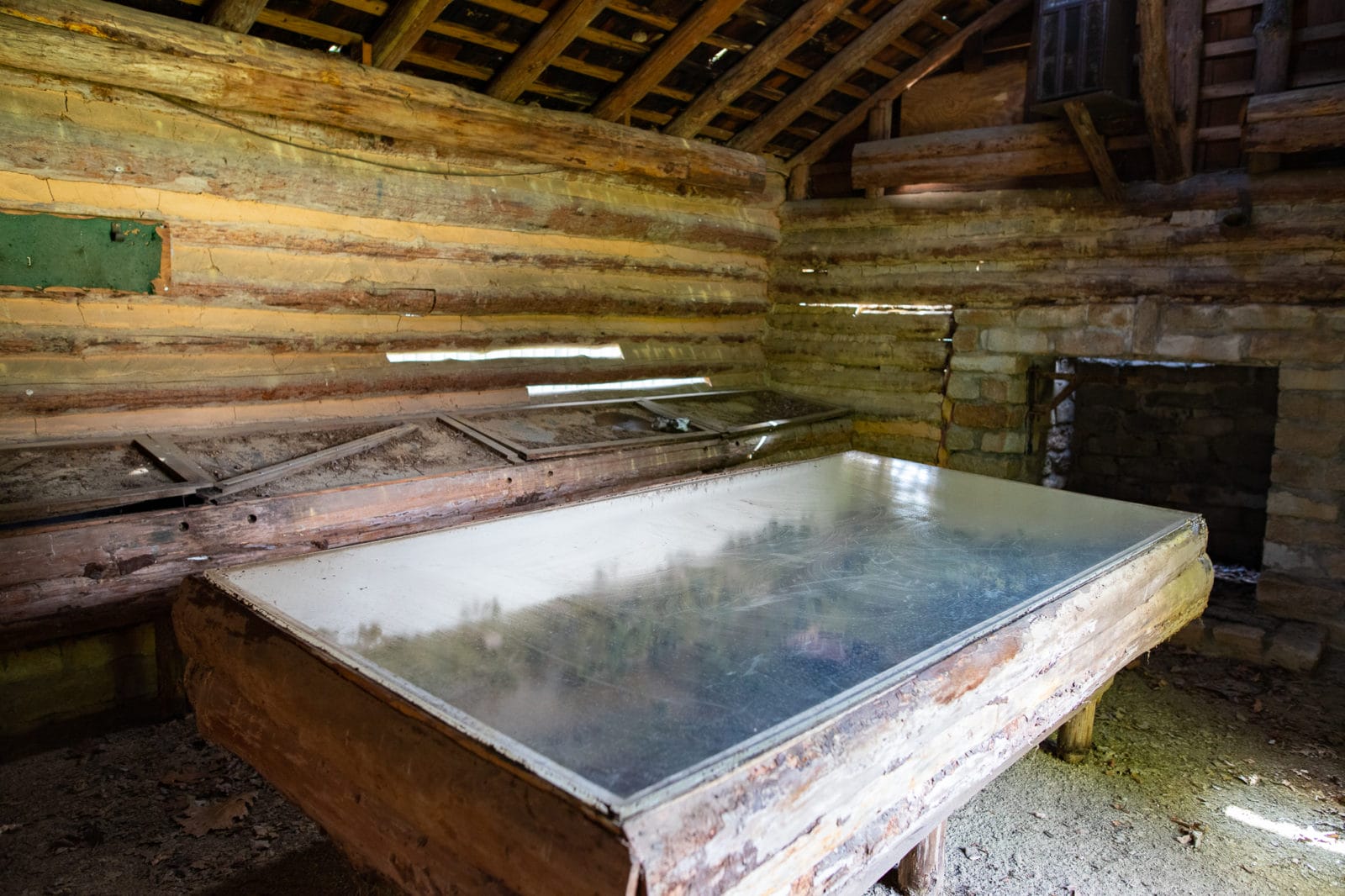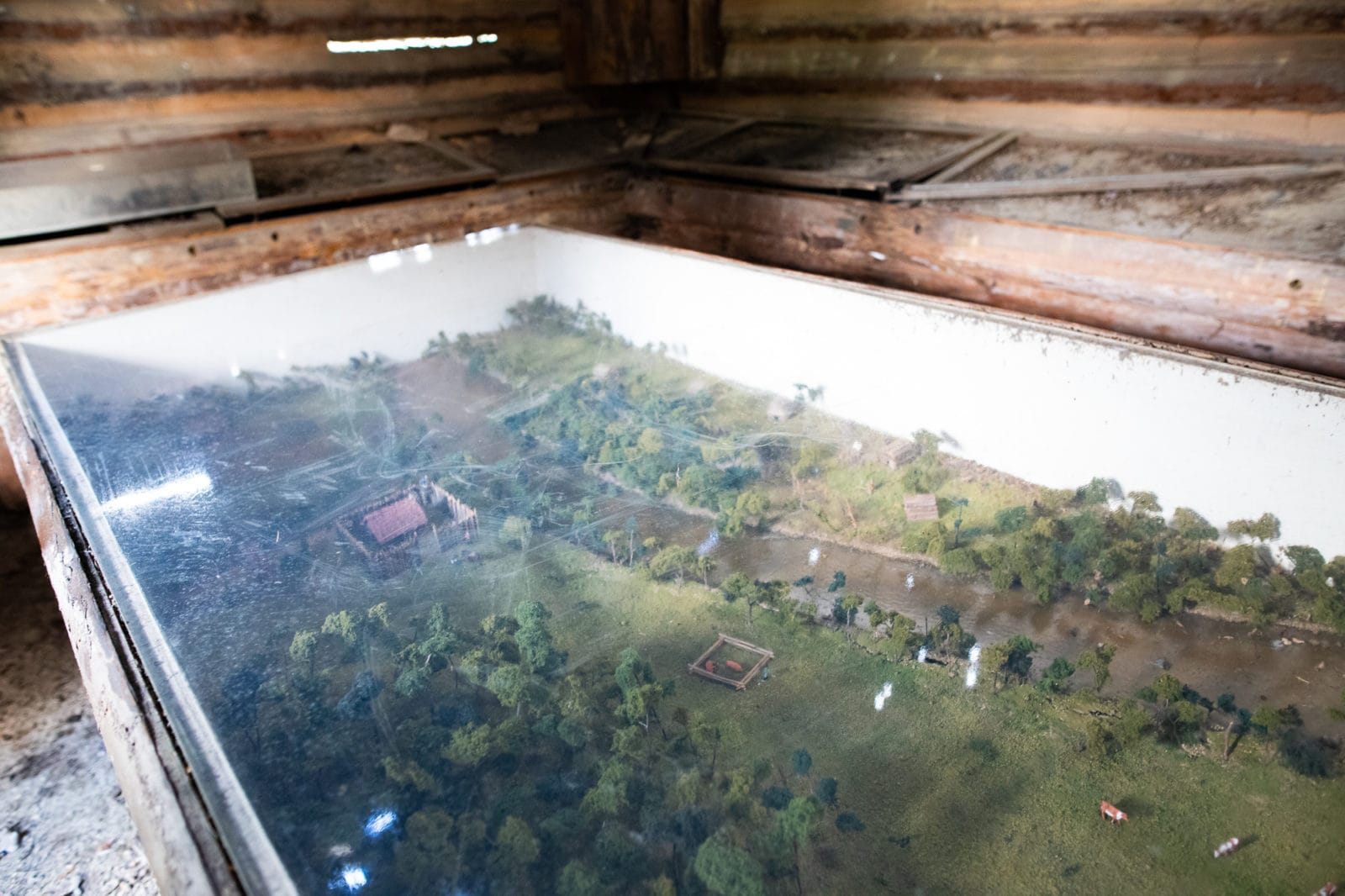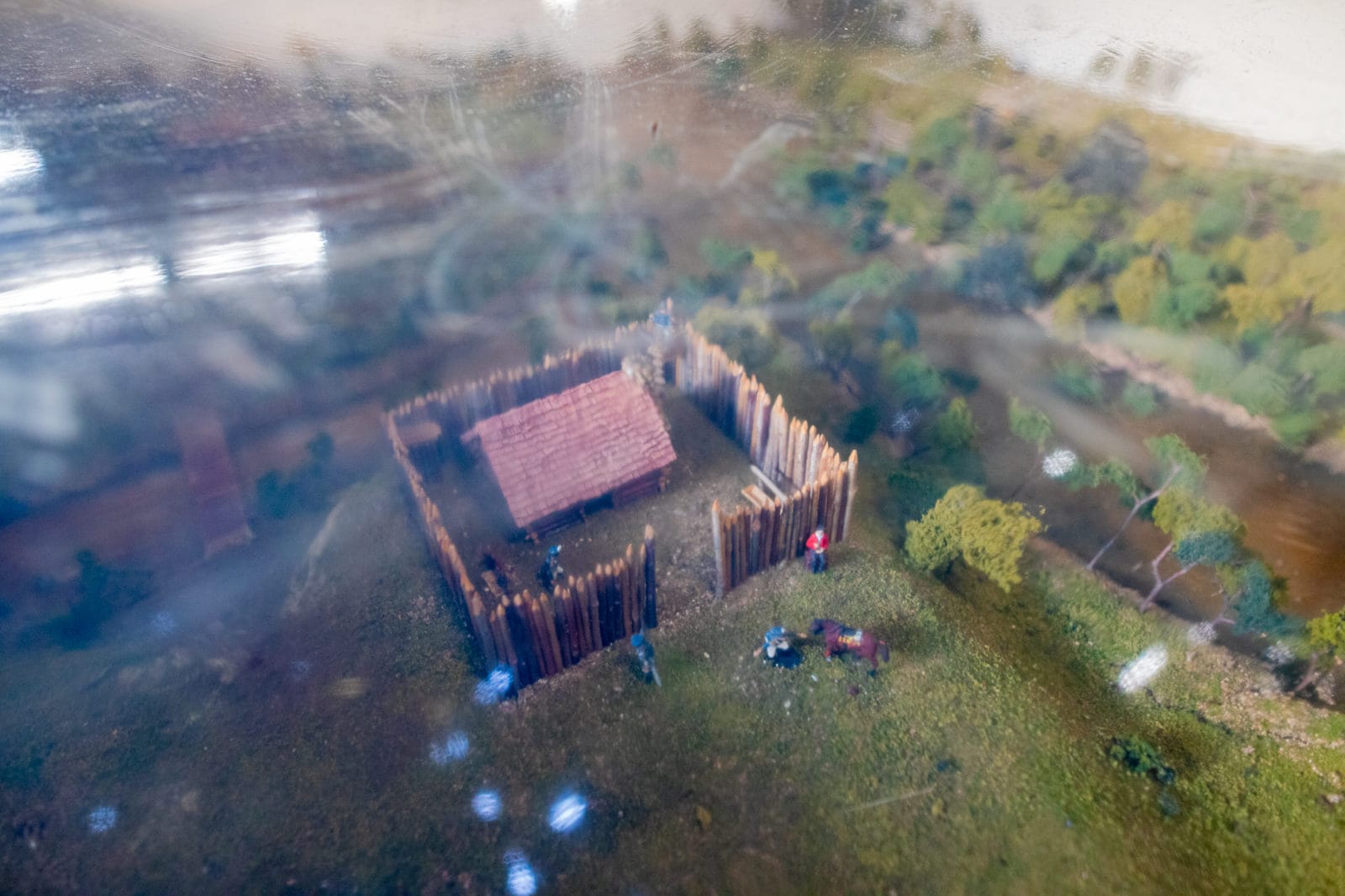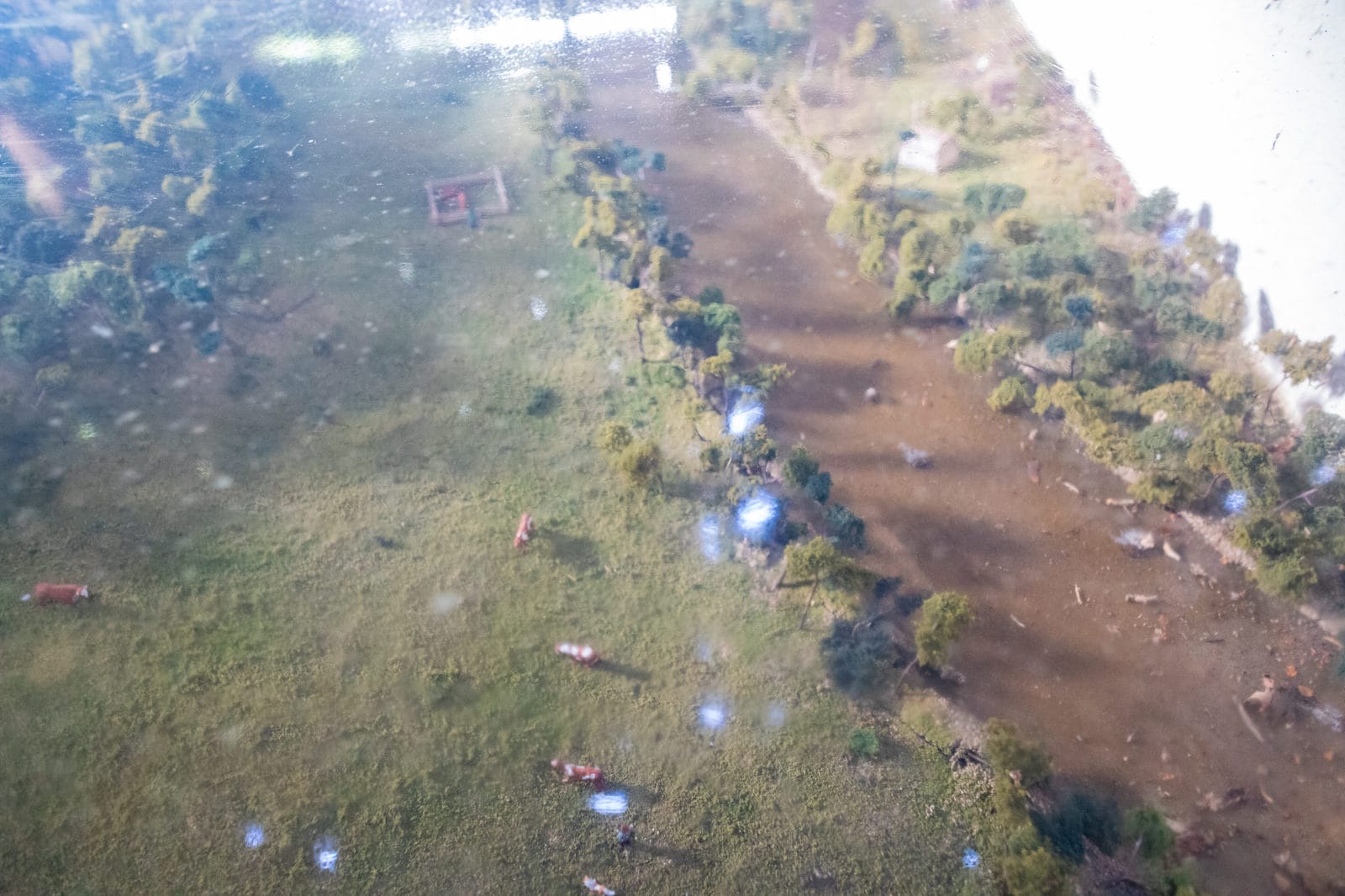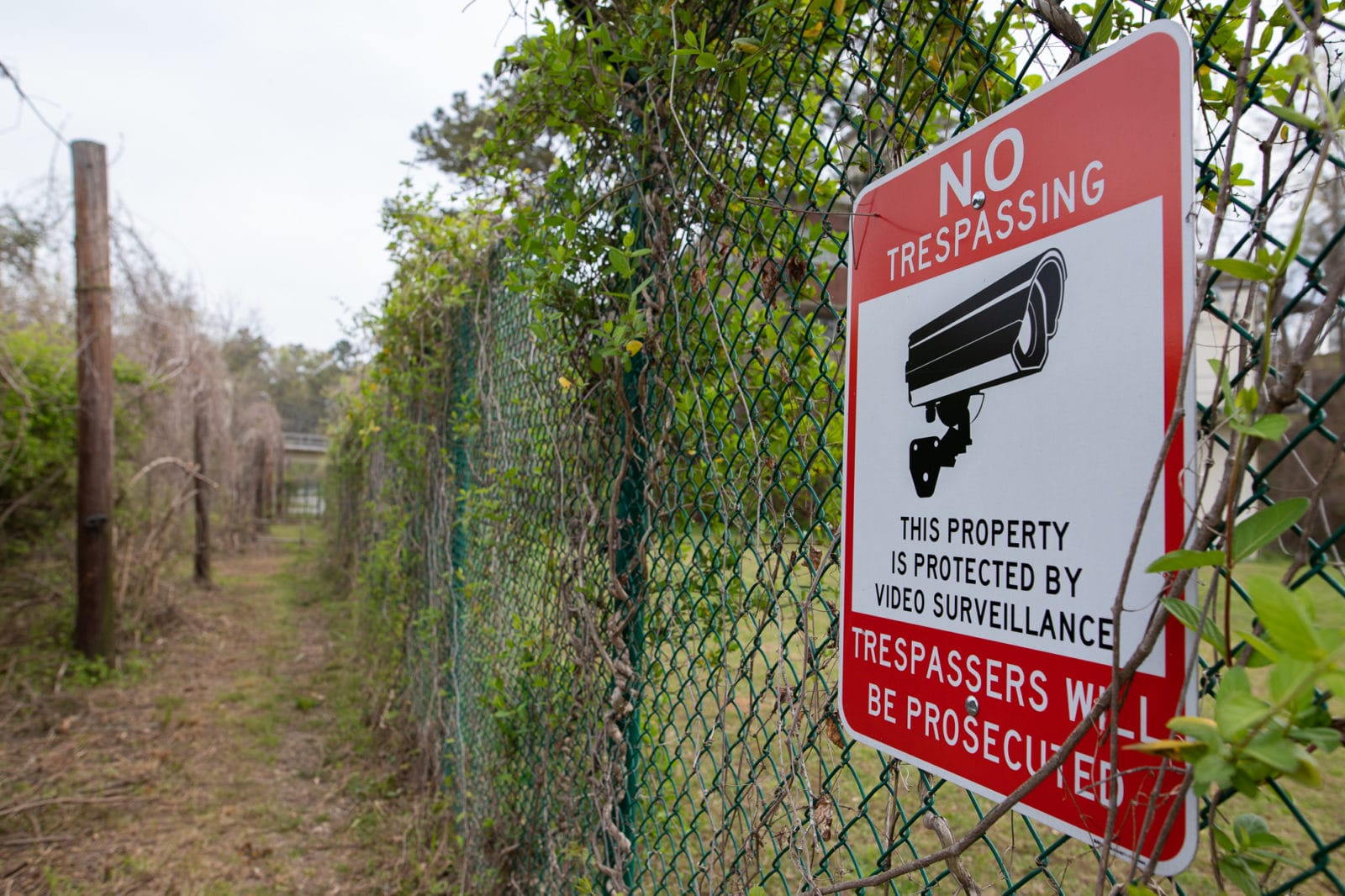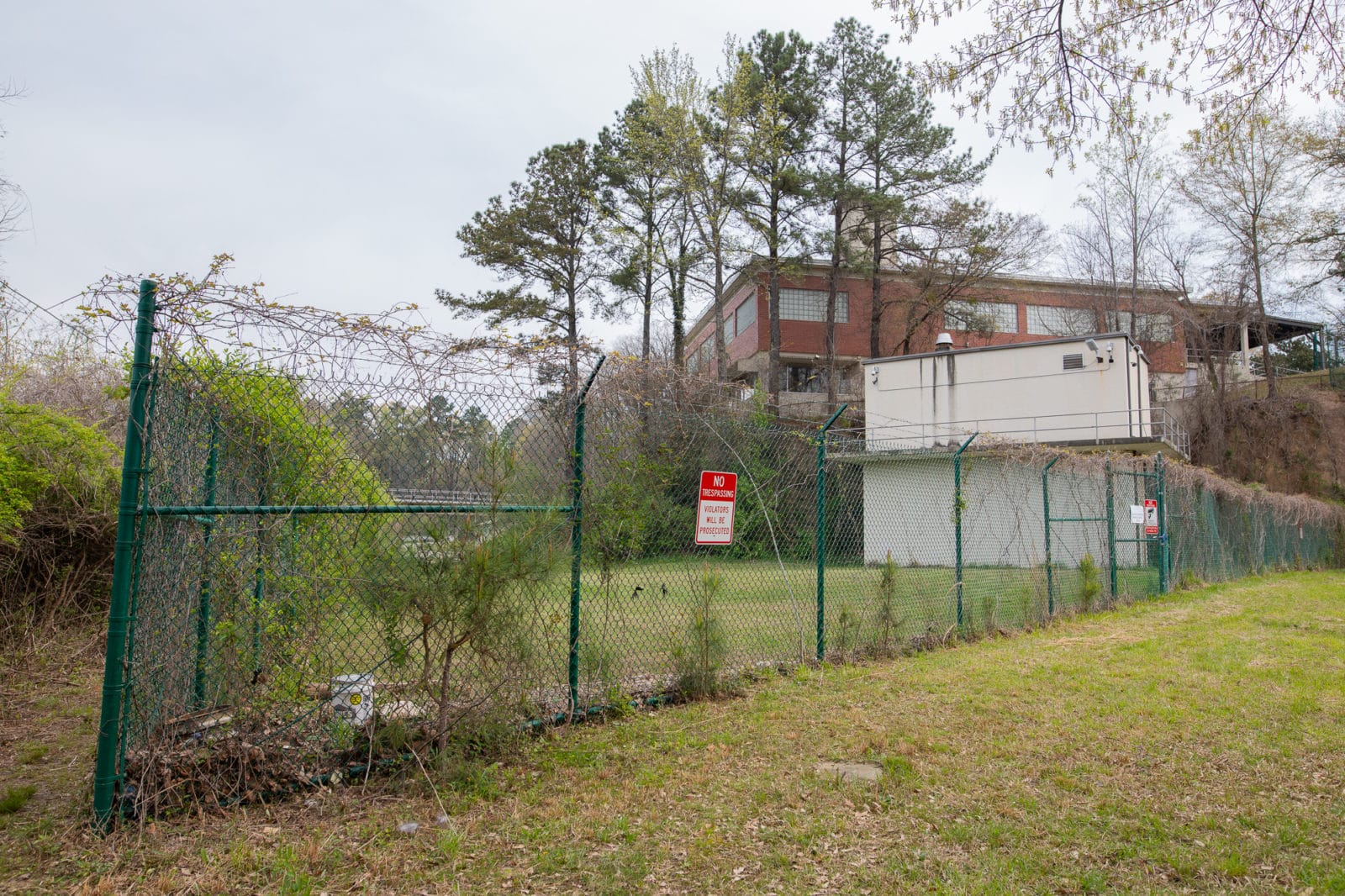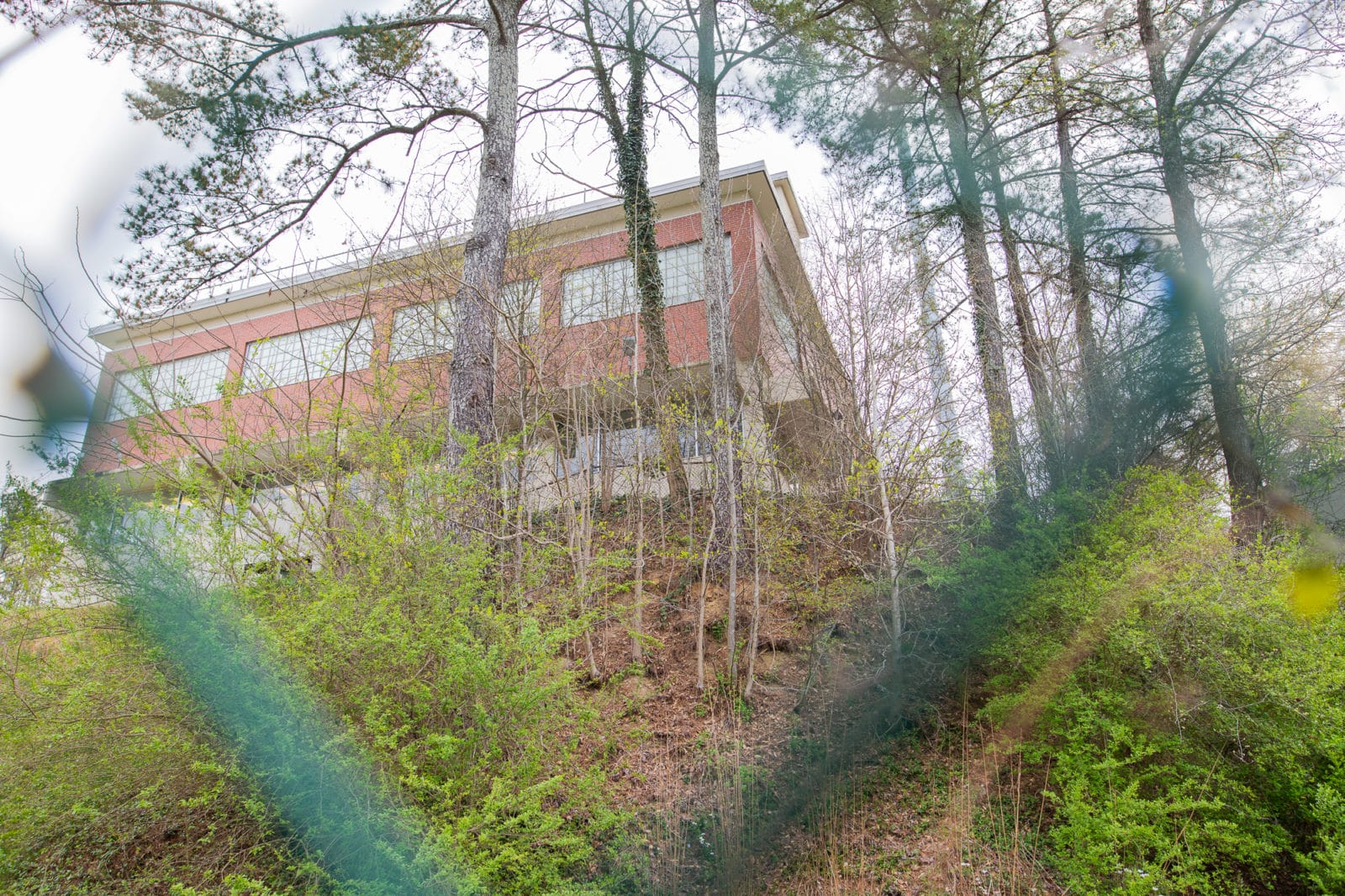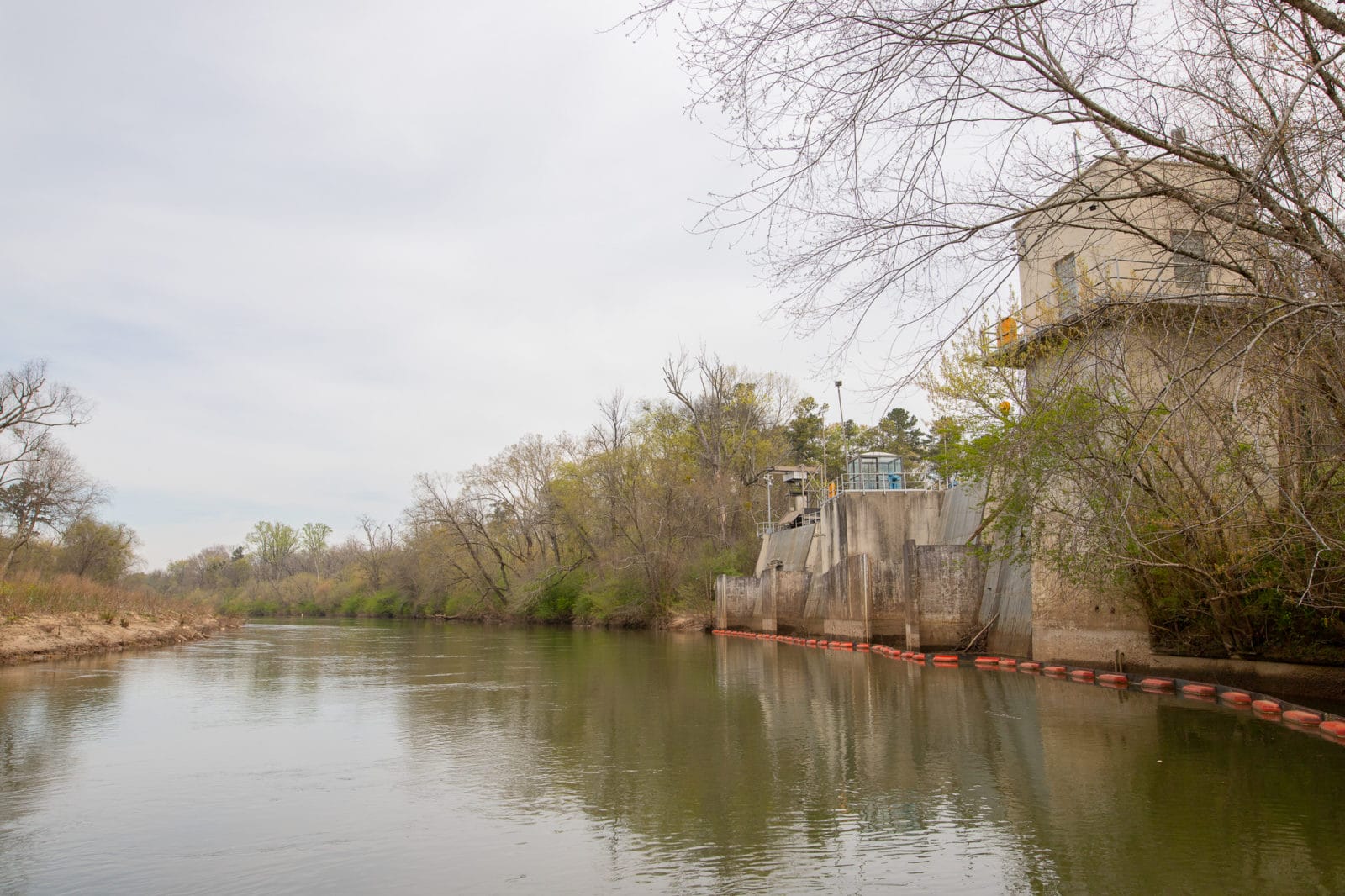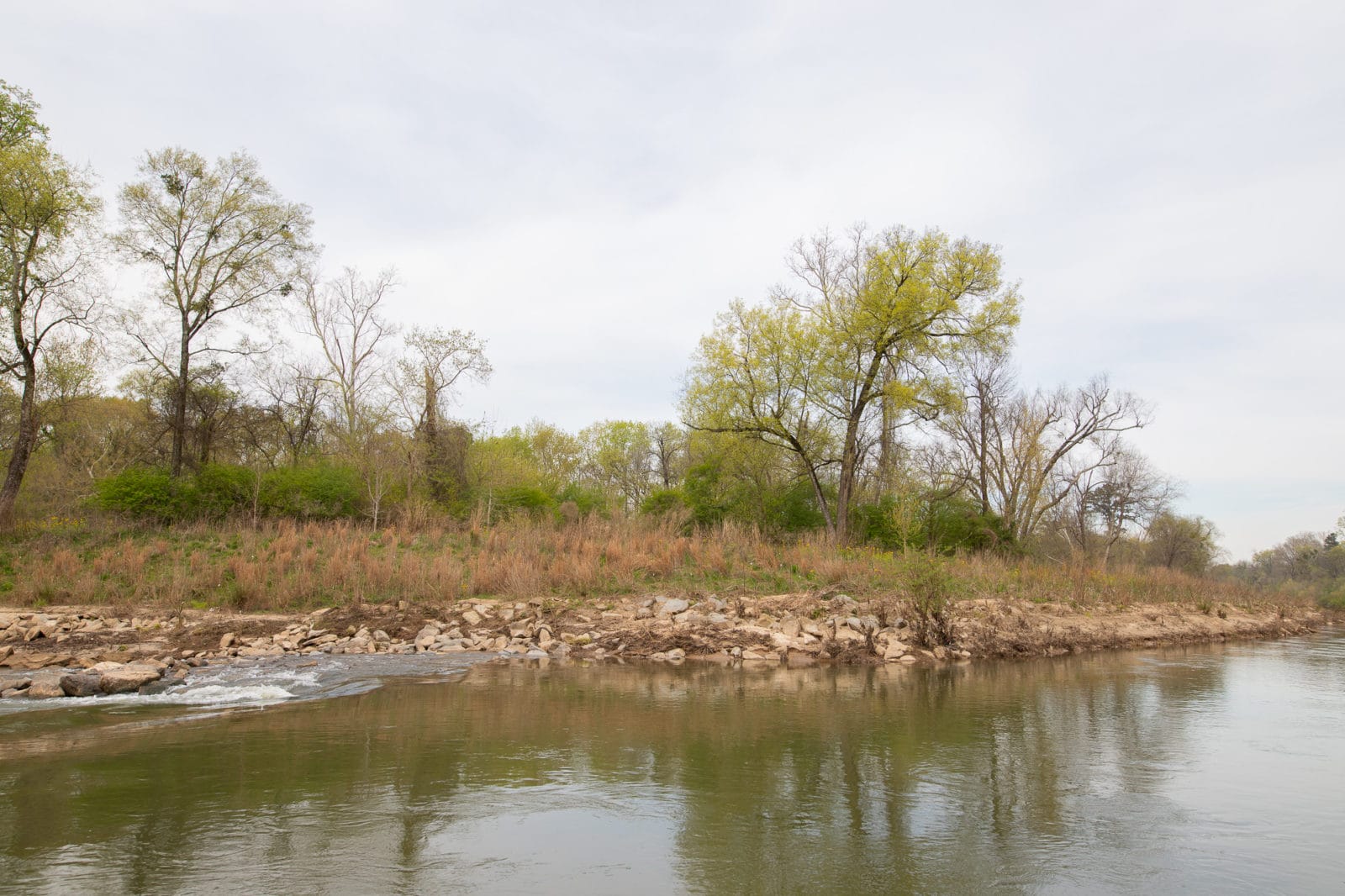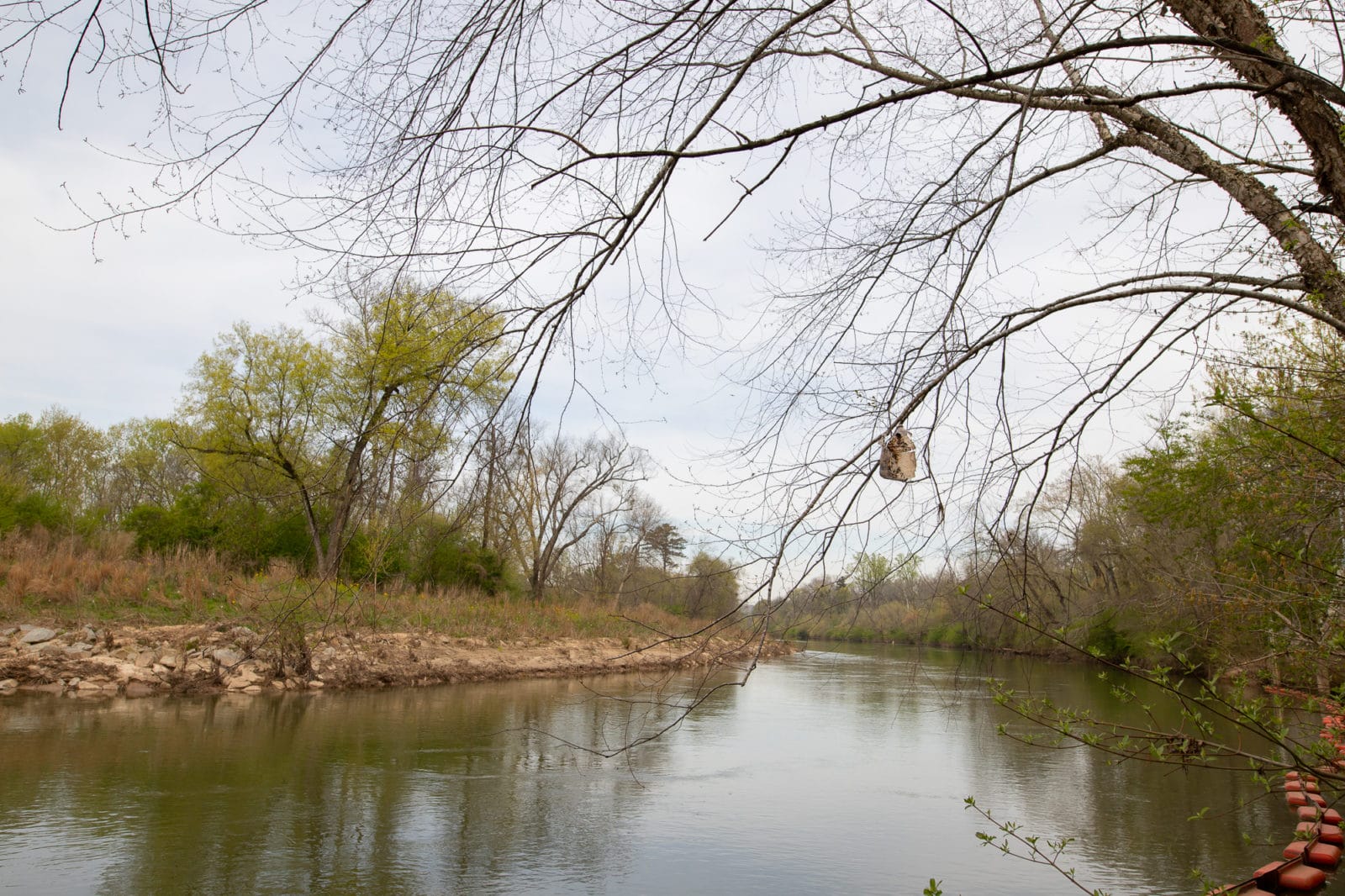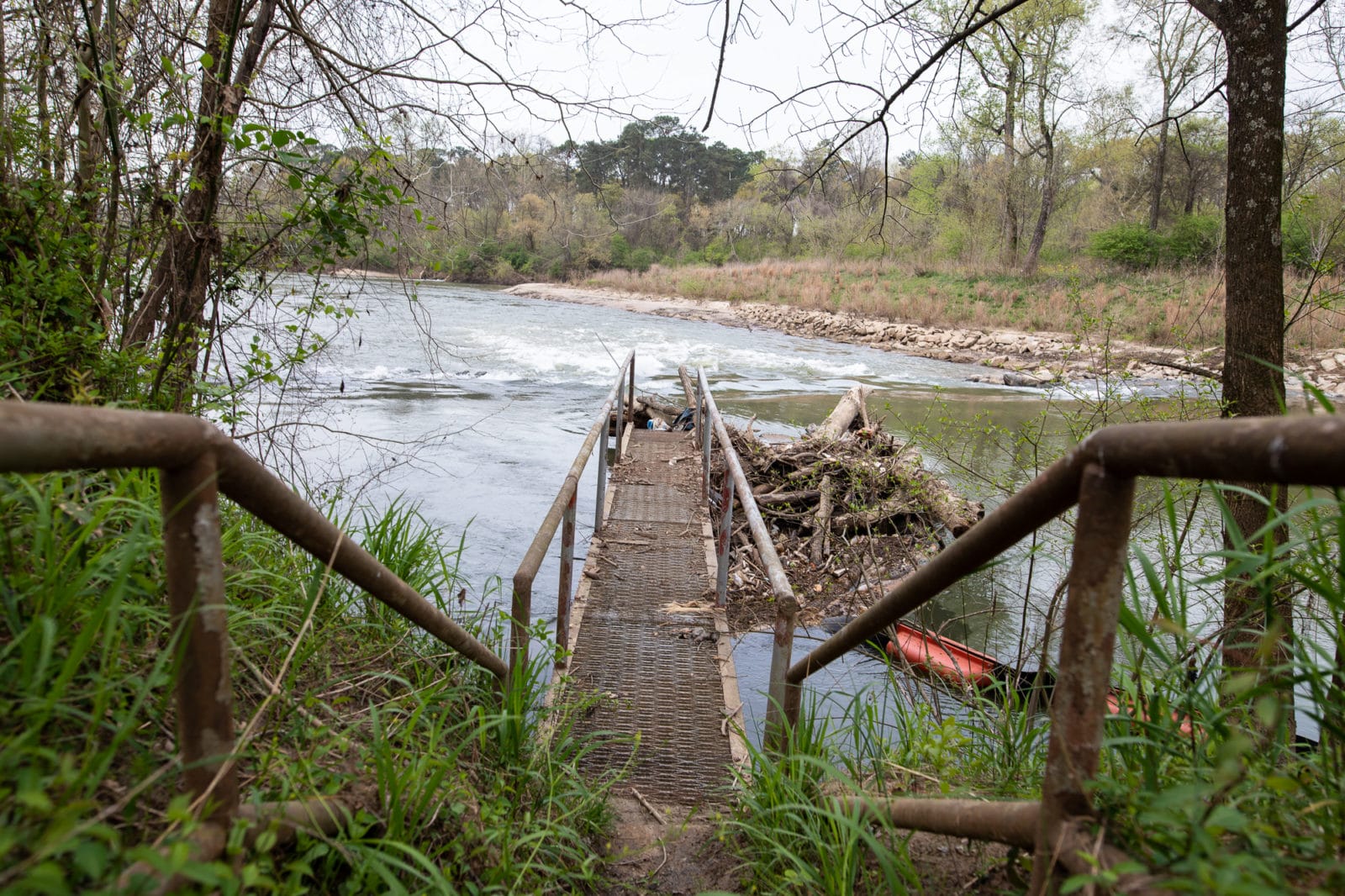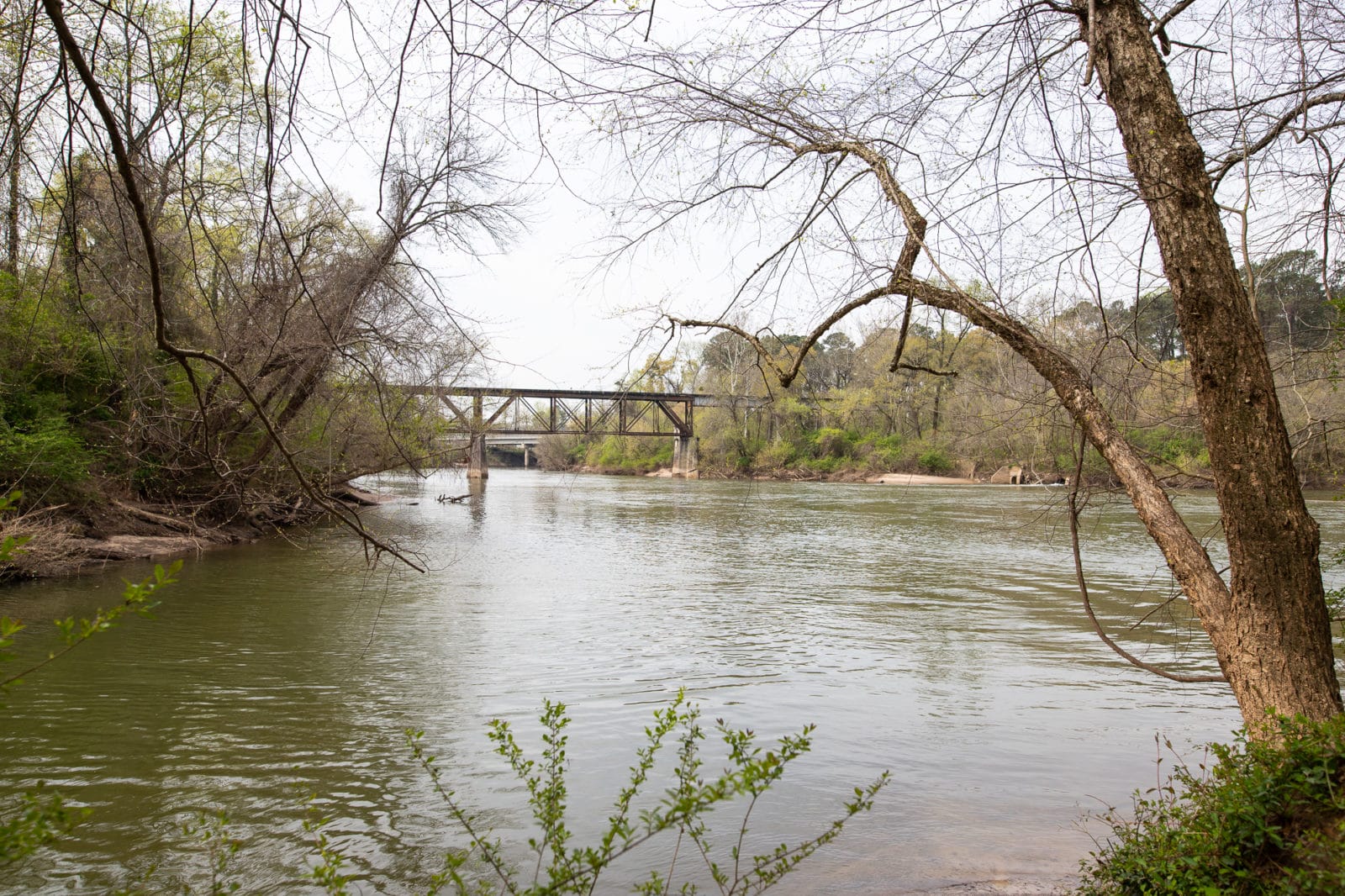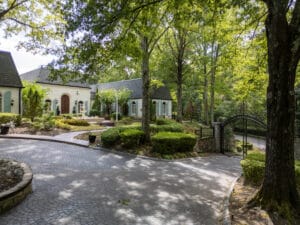At Standing Peachtree Park a sliver of grass runs down a path bordered by a wooded cliff and the banks of Peachtree creek. The path opens up to a small greenspace that extends to the edge of the Chattahoochee River. Tracks of deer and raccoons can be seen in the muddy path and a cacophony of birds sing in the trees above. The underbrush is overgrown and paths poorly defined along the sandy banks, but with careful footing one can reach the corner of the park where the Chattahoochee and Peachtree Creek meet. The site offers unique views of the Marietta Boulevard bridge to the south and an island in the middle of the river to the west.

The entry off Ridgewood Road is surrounded by a chain link fence that displays signage pertaining to the Atlanta River Intake facility located within the park’s grounds. A few parking spots, a modest greenspace, and a recently restored stone pavilion with picnic facilities and fireplace occupy the space between the gates at the street, another interior fence, and the security gate encircling the intake facility. Large trucks rumble down the park’s main entry on and off throughout the day.
Despite its appearance and odd size, Standing Peachtree Park is one of Buckhead’s most significant historical sites. In the rush of development of the area it is worth paying respect to what these places used to represent. Long before the first white man ever moved to Buckhead, this area was the home of a Creek village by the name of Standing Peachtree. There is some debate as to the origin of this name, but historians generally agree that the term was actually “pitch” tree which referred to pine trees that were used for their pitch, or sap. That initial tree for which all Peachtree streets and companies are named was located on this very spot and was a popular meeting location for Native Americans in the area.
Artifacts found on the site can be dated back to the Archaic period around 8000 BC, which goes to show just how historic this land truly is.
In the early 1800s the Chattahoochee river represented the division from the neighboring Cherokee nation. The Creek village which was situated at a high point near the mouth of Peachtree Creek offered vital trading opportunities between tribes and later with the colonies.

During the war of 1812 tensions were high between the Creek nation who aligned with the British and the Cherokee who sided with Georgians. In the summer of 1813 the Governor of Georgia, David Mitchell, sought to reinforce the border of Georgia against the Creeks. He assigned Lt. George Gilmer, 22 soldiers, and a group of workmen to push forward 30 or 40 miles beyond the frontier to Standing Peachtree. There, straddling Peachtree Creek, they began constructing Fort Peachtree.
Upon its completion on July 14, 1814 the fort was host to a boat yard, five boats, two large block houses, six dwellings, one store house, agriculture, and livestock. The fort represented the first non-Native settlement in present-day Atlanta. Proximity to the river facilitated supplying forts further south via boats stocked with ammunition and goods during the war. Hostilities continued between the Native American communities nearby, and Gilmer wrote of his success in diffusing one such revenge plot between the groups not long before he left the fort.
The first post office in Atlanta opened at Standing Peachtree on April 5, 1825.
James McConnell Montgomery, a soldier who had been stationed at Fort Peachtree, remained at the site after the fort was abandoned and built a white wooden structure there which served as the area’s first post office. His family ran the office for the next 17 years until it closed in 1842, and Montgomery then invested his money in a ferry, known as Montgomery’s Ferry, which became a mainstay for members of the local community.
For nearly two centuries nothing much changed at Standing Peachtree. The fort and post office were eventually abandoned and later the Atlanta Waterworks company set up shop on the grounds, pulling from the swift flowing waters of the Chattahoochee. John Beach, president of Buckhead Heritage Society, thinks that the main fort building was likely positioned up high on a hill where the facility now stands as references indicated the fort had views that spanned several miles.
Preserving History
In 1976 the city revisited Standing Peachtree and constructed a replica of Fort Peachtree. They outfitted it with display cases full of artifacts, a large diorama of the site from above, and cannons that sat proudly out front. For decades the site was a popular stop for school groups and field trips. In the years leading up to the 1996 Atlanta Olympics heightened fears of terrorism led to the decision to enclose the waterworks facility and fort as well as closing off the entrance from the street. Sometime during that time vandals broke into the small cabin and broke the display cases, stealing the priceless artifacts inside.

Today the small building is mostly hidden behind a tall wooden fence just beyond the gate to the Waterworks facility. Cobwebs and a thick layer of dirt and dust cover every surface. The door hangs ajar, a broken lock attached to the handle. Shattered plexiglass rests on top of empty displays. Plaques hang akimbo from the log walls of the cabin. At one end of the structure is a fireplace with an iron arm that swings out to hold cast iron pots above the fire. A hollow gourd above the mantle has at some point become home to a family of birds. A broken spinning wheel lies in pieces in the corner.
At first glance the large table in the middle of the space appears to be nothing special, just a dusty workspace. On the day that I visited I was accompanied by chemist Hetal Choksi. Curious, we used a few towels and water to wipe down the surface removing years of dirt. Much to our surprise, we discovered that the thick plexiglass top of the table had succeeded in protecting a large diorama within. This 44 year old rendering includes hundreds of trees crafted by hand and water made of poured resin. Apart from some figures that have tipped over and a few pockets of dust that have made their way under the glass, the display is still in remarkably good shape.
Access or lack thereof
Visiting to the replica of Fort Peachtree is complicated. I gained entry only after weeks of phone calls and emails during which I tracked down and got approval from the management of the River Intake and the Atlanta Parks Department. Choksi explained that to her knowledge the public could actually visit the replica during business hours as long as they have permission, but the process for gaining said permission is not easy or widely known.
These days, the once-forgotten and neglected park is at the center of the conversation around waterway parks in Buckhead. Standing Peachtree represents one of the few greenspaces in the upper westside of Buckhead, and neighbors rejoiced when former City Councilwoman Yolanda Adrean convinced the city to reopen the park to the public back in 2014. Dog owners enjoy walking the trail down to the river, some locals bring their fishing poles and cast a line into the water, while others come to the site to birdwatch or scour the grounds for Native American artifacts.
One proposal that would impact Standing Peachtree Park is the Chattahoochee River Greenway, a plan to implement trails along the river which has gained significant momentum in recent years. In the summer of 2018 the city committed to a $100,000 donation towards the $1.5M master plan budget for the project which would eventually connect a 100 mile trail linking the Chattahoochee Bend State Park in Coweta County all the way to Lake Lanier. The route, set to act as a sort of waterfront BeltLine, would also connect Proctor Creek Greenway to the Silver Comet Trail via pedestrian bridge. If the plan moves forward, the site is likely to see better access to the waterfront and paths that connect to nearby parks. Adrean explained that she hoped the future plans would incorporate a boat launch for kayaks and canoes, especially considering that the site was utilized for training during the Olympics.
John Beach is optimistic about these plans to revitalize Standing Peachtree but notes that the design does not currently incorporate any historical displays or references to the park’s long history. As of now the fort replica is the only remnant of what once was at this odd little park, still sitting neglected and forgotten within the waterworks property. The future is uncertain and what impact the site has will depend on those with the power to tend to this historic park’s needs.
Will organizations continue to develop this area without regard for the historical significance of Standing Peachtree Park? Will anyone step up and manage the practical maintenance and needs of this quaint little cabin? Is the Buckhead community dedicated to acknowledging and honoring the Native Americans who called this land home before colonization spread and the Indian nations were exiled? Only time will tell.


